6- Diversity and Inclusivity InFashion Trend
Hey, let’s chat about something that’s been shaking up the fashion world in the best way—diversity and inclusivity in trends. You’ve probably noticed it: fashion’s not just for one type of person anymore. It’s not about fitting into some narrow mold where you’ve got to look a certain way or be a certain size to be “in.” Now, it’s like the doors have been flung wide open, and everyone’s invited to the party—different body types, skin tones, genders, cultures, you name it. And guess who’s helping lead the charge? Influencers, designers, and brands who are finally waking up to the fact that style looks amazing on everyone. So, let’s unpack this shift and why it’s such a breath of fresh air.
For the longest time, fashion felt like an exclusive club with a strict guest list. Think back to those old-school runway shows or magazine covers—it was always the same tall, super-slim models, usually with a very specific look that didn’t reflect most of us. If you didn’t fit that mold, good luck finding clothes that made you feel seen, let alone trendy. But now? It’s like the whole game’s changed. Influencers are out here showing off looks that celebrate all kinds of beauty. You’ve got creators of every size styling the same dress in their own way, or someone rocking a traditional outfit from their culture and making it the coolest thing you’ve ever seen. It’s not just about following trends anymore—it’s about rewriting them so everyone gets a say.
What’s so exciting is how this push for diversity is coming from the ground up. Influencers, especially, are the ones holding the megaphone. They’re not waiting for big brands to catch up—they’re out here demanding it. I’ve seen creators call out brands that only carry tiny sizes, or they’ll share their journey of finding fashion that fits their curves, their height, or their gender
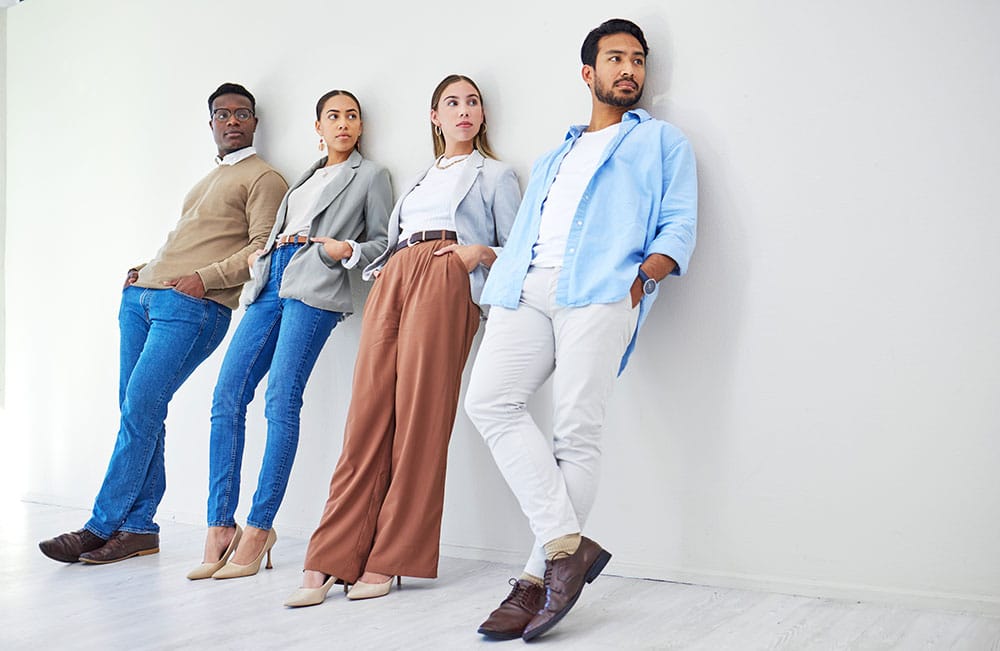
expression. They’ll post a fit pic in a bold, colorful hijab, or they’ll style a suit in a way that breaks all the old gender rules, and suddenly we’re all rethinking what “fashionable” even means. They’re showing us that trends don’t have to be one-size-fits-all—they can be as unique as we are, and that’s what makes them pop.
And the best part? It’s not just talk—it’s action. Brands are starting to listen, thanks to the noise influencers and their communities are making. We’re seeing more size-inclusive lines, more shades in makeup, more campaigns with models who actually look like the people buying the stuff. It’s like fashion’s finally holding up a mirror to the real world, and it’s beautiful. Influencers are out here proving that diversity isn’t a buzzword—it’s a vibe, and it’s making trends richer, more creative, and way more fun. So, let’s keep this convo going, because this shift? It’s just getting started, and I’m so here for it.
Influencers Championing Size Inclusivity and Body Positivity
Alright, let’s dive into something that’s been giving me all the feels lately—influencers who are out here championing size inclusivity and body positivity like the superheroes they are. You’ve seen them, right? These creators are showing up in their full, fabulous selves, rocking outfits that make them feel amazing, and saying, “Hey, fashion’s for everybody—no matter your size, shape, or anything else.” They’re not just styling clothes; they’re rewriting the rules, breaking down old stereotypes, and making us all feel a little braver in our own skin. So, let’s talk about how they’re doing it and why it’s such a big, beautiful deal.
First off, these influencers are like a breath of fresh air in a fashion world that’s been stuffy for way too long. For years, the industry had this narrow idea of beauty—think super-slim models on every runway, in every ad, like that was the only way to be “stylish.” If you didn’t fit that mold, good luck finding clothes that made you feel good, let alone trendy. But now, influencers are kicking that door wide open. They’re showing up in all their glory—curvy, plus-size, petite, tall, whatever—and they’re like, “I’m here, I’m fabulous, and I’m wearing this dress my way.” They’ll style a crop top with high-waisted jeans, or a swimsuit that hugs every curve, and they’re not apologizing for it—they’re celebrating it. It’s like they’re holding up a mirror and saying, “You’re perfect as you are,” and that hits deep.
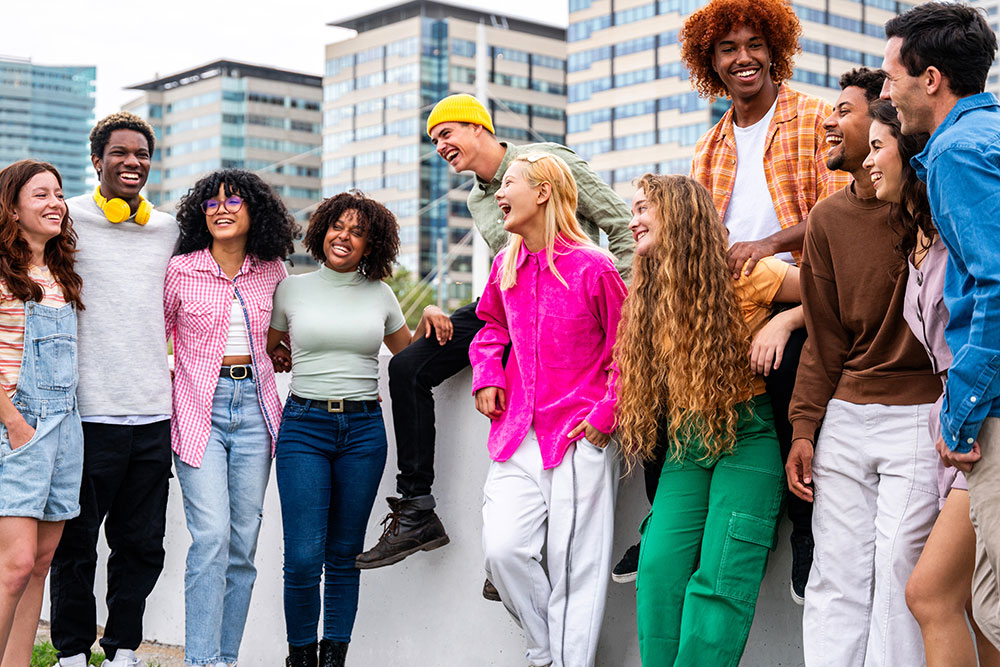
What’s so powerful is how they’re using their platforms to call out the nonsense and demand better. They’re not just posting cute outfits—they’re starting conversations. I’ve seen influencers straight-up drag brands that only carry sizes up to a medium, like, “Hey, what about the rest of us?” They’ll share their struggles, too—maybe they couldn’t find a prom dress that fit growing up, or they felt invisible in stores. But then they’ll pivot, showing off a haul from a size-inclusive brand, or they’ll style a piece in a way that makes you forget all the old rules. On Instagram, they’ll post a pic in a bold red dress with a caption like, “Took me years to love my body, but this dress? It’s a yes.” On TikTok, they’ll do a “fit check” video, twirling in a skirt and saying, “Size 16 and slaying it.” They’re not just showing us fashion—they’re showing us confidence, and it’s contagious.
They’re also pushing brands to step up, and it’s working. These influencers have millions of followers who are watching, listening, and ready to support. When they shout out a brand that’s doing size inclusivity right—like one with a real range, from XXS to 5X—they’re sending a flood of love (and sales) that way. I’ve seen small labels blow up because an influencer shared their stuff, saying, “Finally, a brand that gets it.” And the big brands? They’re taking notes. More of them are expanding their size ranges, showing diverse models in their campaigns, and even collaborating with these influencers to design pieces that actually fit real bodies. It’s like the industry’s waking up, and influencers are the ones shaking them out of their slumber.
What I love most is how they’re making body positivity a whole vibe, not a chore. They’re not out here saying, “You have to love yourself!” in some preachy way. They’re just living it—dancing in a bikini, laughing in a tight dress, or lounging in sweats because that’s what feels good that day. They’ll share their journey, too, like, “I used to hide in baggy clothes, but now I’m all about this body-hugging jumpsuit.” It’s real, raw, and so relatable. On YouTube, they’ll do a styling video, showing how to wear a piece in a way that makes you feel confident, no matter your size. On Twitter, they’ll drop a thread about their favorite inclusive brands, sparking a whole convo. They’re building a community where everyone’s invited, and it’s like a warm hug for anyone who’s ever felt left out by fashion.
And the ripple effect? It’s huge. Because of them, we’re starting to see ourselves differently. I’ve caught myself reaching for things I never would’ve tried before—like a fitted top or a bright skirt—because I saw an influencer who looks like me rock it with zero shame. They’re not just changing trends; they’re changing mindsets, showing us that beauty isn’t a size—it’s a feeling. They’re out here proving that fashion’s for all of us, and they’re doing it with so much joy, it’s impossible not to join in. So, here’s to these influencers—they’re not just champions; they’re game-changers, and I’m so here for it.
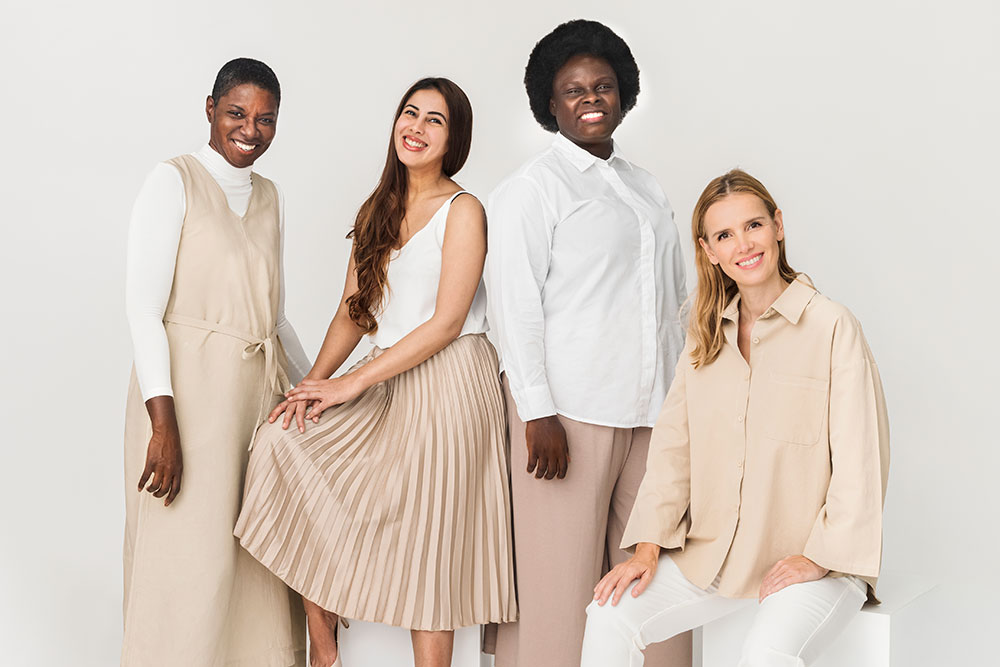
Tess Holliday is an influential voice in the body positivity movement. As a plus-size model and activist, Tess has used her platform to challenge traditional beauty standards and promote self-acceptance. Her #EffYourBeautyStandards movement has become a rallying cry for individuals who reject restrictive beauty norms and embrace body diversity.
Ragini Nag Rao is a plus-size influencer who is celebrated for her commitment to body positivity and self-acceptance. Through her unique, vintage-inspired style and open conversations, Ragini challenges conventional beauty standards and fosters a community of inclusivity. Her influence extends beyond the fashion industry, inspiring individuals to embrace their individuality and reject societal pressure to conform.
Lizzo, the Grammy award-winning singer, is also using her platform to advocate for body positivity and size inclusivity. She has launched a shapewear and undergarment company called Yitty, which promotes body positivity and size inclusivity. Through her music and advocacy, Lizzo is inspiring individuals to love and accept themselves, regardless of their shape or size.
Remi Bader, a plus-size influencer, collaborates with brands like Revolve and Aeries to promote inclusivity, self-confidence, and individuality. She is passionate about helping young adults embrace their bodies and be confident in their own skin. Through her platform, Remi promotes a positive and inclusive message, inspiring individuals to love and accept themselves.
Javiera is a plus-size influencer who seamlessly blends recipes, plus-size fashion, beauty, and lifestyle content. She celebrates confidence, creativity, and self-expression, inspiring her followers to do the same. Javiera’s platform promotes a positive and inclusive message, encouraging individuals to embrace their individuality and reject societal pressure to conform.
Francesca Perks is a plus-size influencer known for her bold fashion choices and love of bright colors. She encourages her followers to experiment with their own wardrobes and embrace their individuality. Francesca’s platform promotes a positive and inclusive message, inspiring individuals to love and accept themselves.
Kellie is a plus-size fashion influencer who combines playful inspirations with bold fashion choices. Her feed celebrates individuality and confidence, encouraging followers to have fun with fashion. Kellie’s platform promotes a positive and inclusive message, inspiring individuals to love and accept themselves.
Chloe Ellio:t is a leading plus-size influencer who promotes self-love and challenges traditional beauty standards. Her relatable content resonates with a broad audience, making her an influential voice in the body positivity movement. Chloe’s platform promotes a positive and inclusive message, inspiring individuals to love and accept themselves.
Louise Pentland is a prominent plus-size influencer who openly discusses body image challenges. She empowers her audience to embrace their bodies and promotes self-acceptance and inclusivity. Louise’s platform promotes a positive and inclusive message, inspiring individuals to love and accept themselves.
These influencers, along with many others, are playing a significant roles in promoting size inclusivity and body positivity. Through their platforms, they are challenging traditional beauty standards, promoting self-acceptance, and advocating for greater inclusivity in the fashion industry.
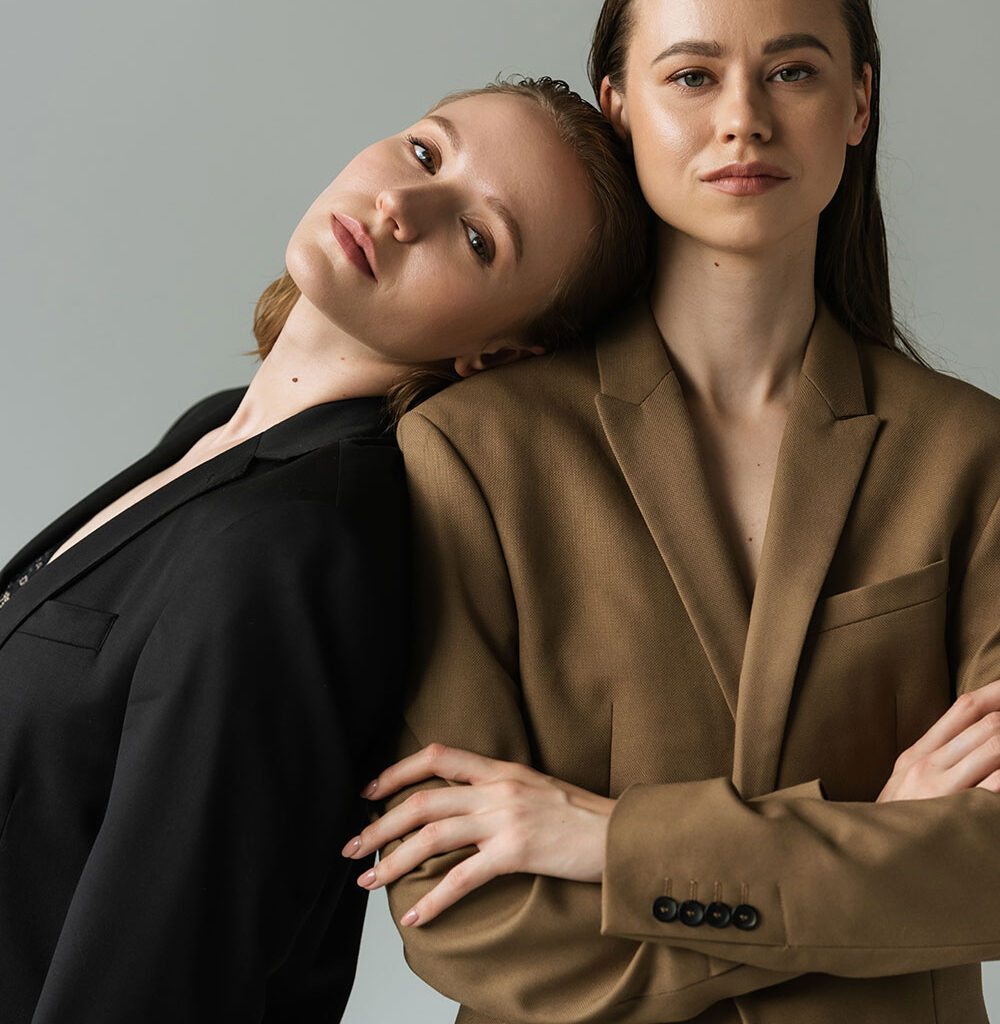
Promoting Gender-Nuetral and Fluid Trends
Hey, let’s talk about something that’s been shaking up the fashion world in the best way—how influencers are leading the charge on gender-neutral and fluid fashion trends. You’ve seen it, right? These creators are out here mixing it up, blending what we used to think of as “guy” or “girl” styles into something totally fresh, and they’re making it look so good. They’re not just dressing up—they’re challenging all those old-school gender norms and showing us that fashion’s about being yourself, not fitting into some outdated box. So, let’s dive into how they’re doing it and why it’s such a big deal.
First off, influencers are like the rockstars of this movement, using their platforms to show us what self-expression really looks like. Take icons like Harry Styles, Billie Eilish, and Indya Moore—they’re basically the poster kids for gender-neutral fashion, and I’m obsessed. Harry’s out here in a flowy Gucci dress one day, then a sharp suit the next, mixing pearls and painted nails like it’s no big deal. Billie’s rocking those oversized silhouettes—think baggy tees and shorts that could fit anyone—blurring the lines between what’s “masculine” or “feminine.” And Indya? They’re serving looks that are all about fluidity, showing us that style doesn’t have to play by any rules. These influencers aren’t just wearing clothes—they’re wearing their truth, and it’s inspiring us all to do the same.
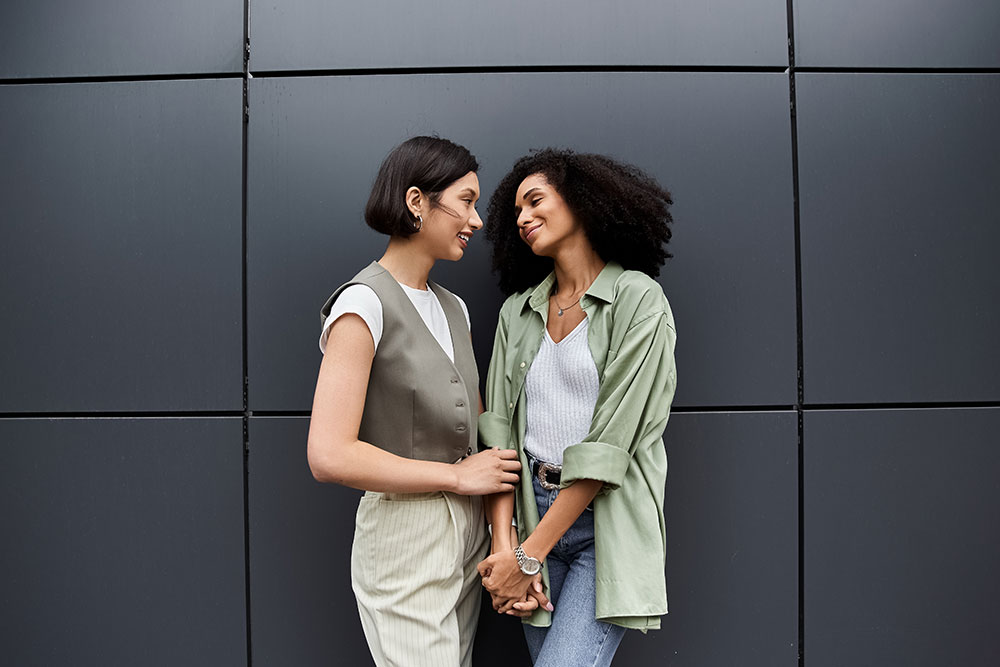
What’s so cool is how they’re using social media to make this a whole vibe. Platforms like Instagram and TikTok are their playgrounds, where they can show off their personal style and connect with people who get it. They’ll post a pic in an androgynous blazer with a caption like, “Feeling myself today,” and tag it with #genderneutral or #fluidfashion. Suddenly, you’ve got a whole community jumping in, sharing their own looks and cheering each other on. On TikTok, they’ll do a quick video transitioning from a tailored jacket to a flowy skirt, set to a beat that makes it pop, and it’s like, “Yes, you can wear whatever makes you feel alive!” It’s not just about the outfit—it’s about the message, and these platforms are letting them shout it loud and proud.
They’re also teaming up with brands to push this movement even further, and I love seeing it. Like, Harry Styles partnered with Gucci to show off their gender-neutral line, rocking pieces that could work for anyone, no matter how they identify. Billie Eilish has done the same with brands like Chanel and Burberry, wearing their gender-neutral fits in a way that’s so her—baggy, bold, and unapologetic. These collabs aren’t just about selling clothes; they’re about selling a mindset. When you see someone like Indya Moore styling a piece that defies all the old rules, it’s like a little nudge saying, “Hey, you can do this too.” Brands are catching on, and influencers are the ones leading the way, showing them that inclusivity isn’t just nice—it’s what we want.
What’s really amazing is how they’re breaking down those tired gender norms, piece by piece. For so long, fashion was like, “Dresses are for girls, suits are for guys,” and if you didn’t fit that, you were out of luck. But these influencers are like, “Nah, let’s mix it up.” They’re showing us that a guy can wear a skirt and still look sharp, or a girl can rock a boxy blazer and own it. It’s all about fluidity—blending the masculine and feminine into something that’s just… you. And by doing that, they’re creating space for everyone, especially marginalized communities who’ve been left out of the fashion convo for way too long. They’re giving people a platform to express themselves, connect with others who get it, and feel seen in a way they never have before.
At the end of the day, this push for gender-neutral and fluid fashion is about so much more than clothes—it’s about freedom. Influencers are out here helping us see that fashion doesn’t have to be a box; it can be a canvas. They’re making the industry more inclusive, more diverse, and honestly, more fun. By challenging those old norms and celebrating individuality, they’re creating a space where everyone can show up as their true self, no matter how they identify. It’s like they’re throwing a big, colorful party, and we’re all invited—no dress code required. So, here’s to these influencers—they’re not just changing trends; they’re changing lives, one fearless fit at a time.
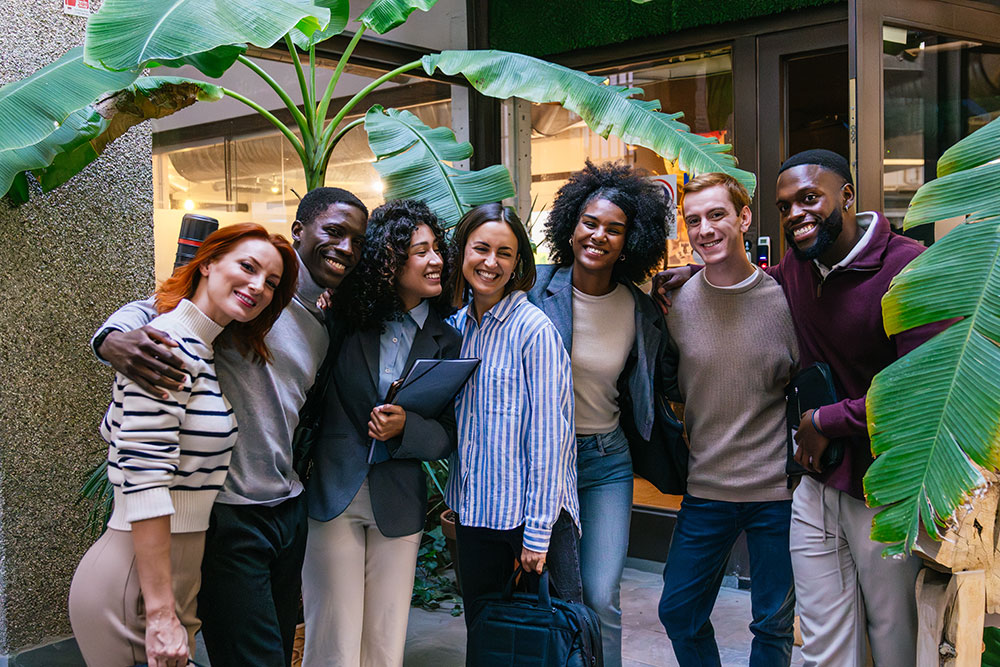
Showcasing Global Culture and Underrepresented Communities in Fashion
Alright, let’s take a little trip around the world without leaving our seats—let’s talk about how fashion’s finally opening its arms to global cultures and underrepresented communities, and how influencers are the ones waving the flag for this beautiful shift. Imagine fashion as a giant tapestry, and for so long, it was woven with just a few threads—same old patterns, same old colors. But now? It’s like the whole world’s been invited to add their stitches, bringing in vibrant hues, intricate designs, and stories that make the fabric so much richer. Influencers are out here showcasing cultures and communities that used to be left in the shadows, and it’s like a global festival of style we’re all invited to. So, let’s dive into this colorful celebration and see what’s going on.
Picture a bustling marketplace in your mind—there’s a stall with silk saris shimmering in the sun, another with beaded Maasai jewelry catching the light, and over there, someone’s weaving a story into a kente cloth that’s brighter than a summer day. That’s what fashion’s starting to look like, thanks to influencers who are bringing global cultures to the forefront. They’re not just wearing clothes—they’re wearing history, pride, and identity. I’ve seen creators drape a traditional Filipino baro’t saya for a photoshoot, the delicate embroidery telling a story of heritage, or rock a bold Ankara print dress that’s like a burst of West African sunshine. They’re not borrowing these pieces for clout—they’re honoring them, sharing the meaning behind every thread, and it’s like they’re handing us a passport to a world we might’ve never explored otherwise.
What’s so magical is how they’re giving underrepresented communities a spotlight that’s long overdue. For years, fashion was this exclusive club—mostly Western, mostly white, mostly one-size-fits-all. If your culture didn’t fit that mold, it was like you were invisible. But influencers are changing that, one post at a time. They’re out here celebrating Indigenous designs—like a creator styling a ribbon skirt with a modern twist, sharing how it’s a symbol of resilience for their community. Or they’ll show off a handwoven huipil from Mexico, talking about the artisan who made it and the generations of craft behind it. It’s not just fashion—it’s a bridge, connecting us to stories and people we might’ve never met, and it’s making the industry so much more human.
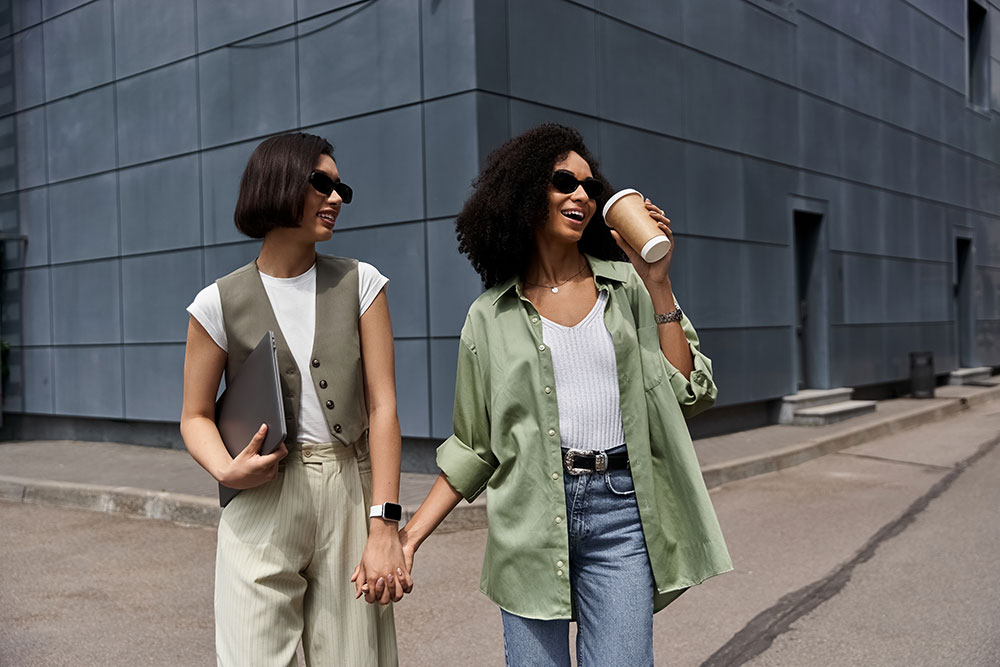
They’re also using their platforms like a global stage, and I’m here for it. On Instagram, they’ll post a carousel of them in a traditional Vietnamese áo dài, the silk flowing like a river, with a caption about its cultural significance. On TikTok, they’ll do a quick “fit check” in a pair of moccasins made by an Indigenous designer, dancing to a beat that feels like a heartbeat. YouTube’s where they go deep—maybe a vlog about visiting a market in Morocco, picking out a kaftan, and sharing the history of the fabric. They’re not just showing off—they’re teaching, inviting us to learn, to appreciate, to celebrate. And they’ll tag it with hashtags like #GlobalFashion or #CulturalStyle, creating a little digital village where others can join in, share their own looks, and keep the conversation growing.
What’s really special is how they’re pushing brands to step up too. Influencers aren’t just showcasing these cultures—they’re demanding that the industry does better. They’ll call out brands that appropriate designs without giving credit, like, “Hey, this pattern’s sacred—don’t just slap it on a t-shirt.” And they’ll shout out the ones doing it right—like a label that collaborates with artisans from underrepresented communities, paying them fairly and telling their stories. I’ve seen influencers partner with brands to create collections inspired by their heritage—like a line of jewelry with Navajo motifs, where the proceeds go back to the community. It’s like they’re planting seeds, encouraging the fashion world to grow in a way that’s respectful, inclusive, and full of heart.
The best part? They’re showing us that fashion can be a love letter to who we are. They’re out here wearing their culture loud and proud, whether it’s a sari with a modern sneaker twist or a dashiki paired with a leather jacket. It’s like they’re saying, “This is me, this is my story, and it’s beautiful.” And that inspires the rest of us to do the same—to dig into our own roots, to wear what makes us feel connected, to celebrate what makes us unique. They’re turning fashion into a global dance floor, where every culture, every community, gets to shine. So, here’s to these influencers—they’re not just styling clothes; they’re stitching the world together, one vibrant thread at a time.
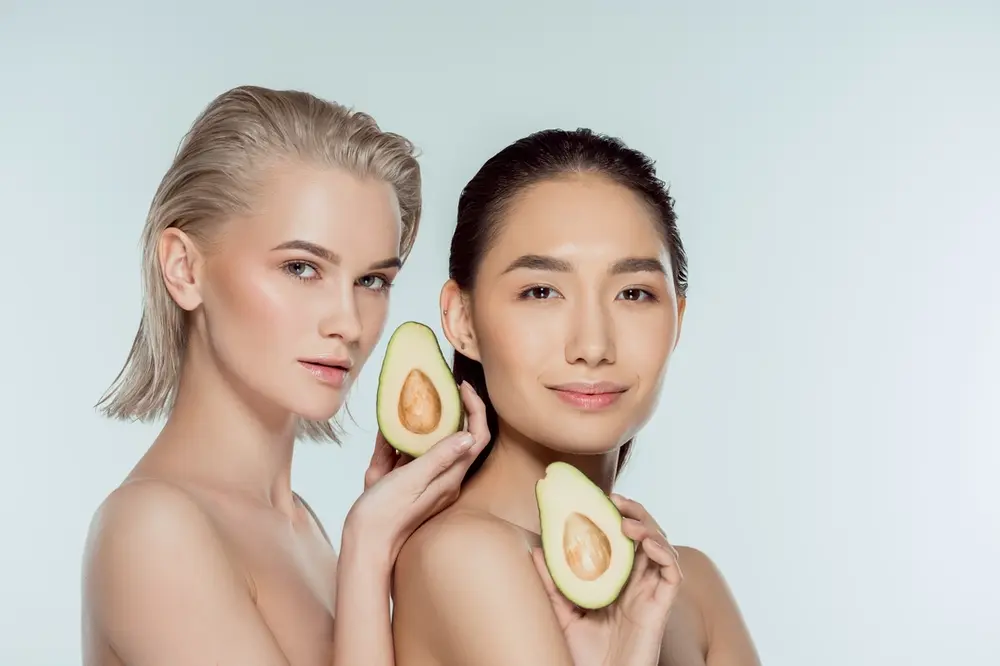
7- The Power of Style and Niche Trend
The power of style and how niche trends are taking over the fashion world like wildfire. Picture style as this electric current, buzzing through the air, and niche trends as the little lightning bolts that strike when you least expect it. They’re not the big, loud trends everyone’s talking about—they’re the quiet, quirky ones that start in hidden corners and suddenly explode into something everyone wants a piece of. Influencers, creators, and everyday style lovers are the ones harnessing this magic, turning personal flair into movements that redefine what’s cool. So, let’s unpack this and see why it’s such a big deal.
Style’s always been this incredible force—it’s like a language we all speak without saying a word. It’s how you tell the world who you are, whether you’re the type to rock a vintage leather jacket like you just stepped out of a ‘70s rock concert or someone who lives in flowy boho dresses that whisper “I’m a free spirit.” But what’s really exciting right now is how niche trends are bubbling up, and they’re all about that hyper-specific vibe. Think cottagecore with its frilly dresses and picnic-in-a-meadow energy, or Y2K nostalgia with its glittery butterfly clips and low-rise jeans. These aren’t trends for everyone—they’re for the dreamers, the rebels, the ones who want to carve out their own little corner of the fashion universe.
Influencers are the wizards behind this magic, conjuring up these niche trends and making them feel like the coolest thing ever. They’ve got this knack for taking something super specific—like, say, wearing tiny sunglasses that look straight out of The Matrix—and turning it into a whole movement. They’ll post a pic in those shades, paired with a sleek black outfit, and suddenly everyone’s digging through thrift stores to find their own pair. Or they’ll lean into something like “dark academia,” rocking tweed blazers and loafers like they’re about to solve a mystery in an old library. It’s not just about the clothes—it’s about the story they’re telling, the world they’re inviting us into. And because they’ve got millions of eyes on them, they can take these little sparks of style and fan them into a full-on blaze.
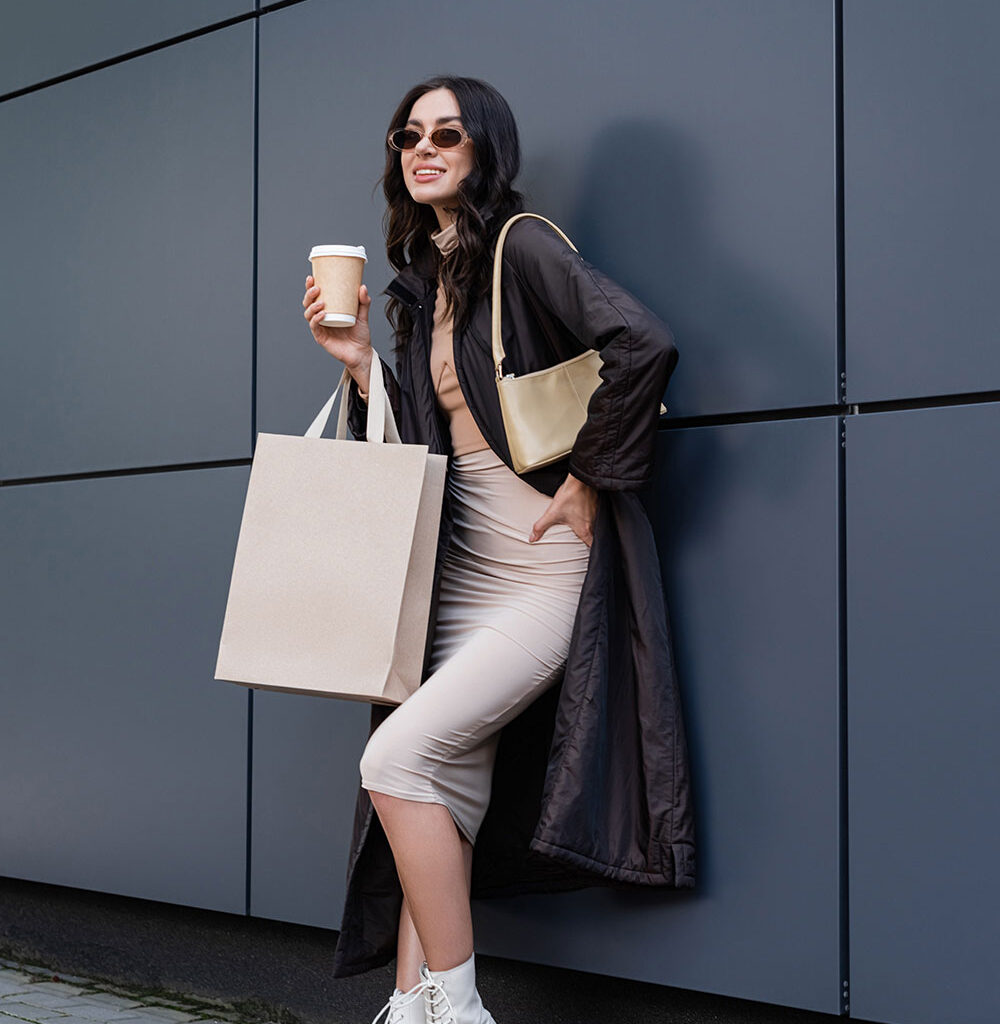
What’s so powerful about niche trends is how they let us find our tribe. Fashion used to feel like a one-size-fits-all deal—if you weren’t into what the big brands were pushing, you were out of luck. But now, it’s like there’s a flavor for everyone. Love the idea of dressing like a modern-day pirate with ruffled shirts and eye patches? There’s a niche for that. Obsessed with ‘90s grunge, complete with plaid skirts and combat boots? That’s a whole vibe too. Influencers are out here showing us that style doesn’t have to be universal—it can be as unique as we are. They’ll share their looks on TikTok with a quick “fit check” video, or on Instagram with a moody flatlay, and suddenly you’re like, “Oh, that’s my people.” It’s like they’re building little style communities where we can all belong.
They’re also using their platforms to make these trends spread like wildfire. On YouTube, they’ll drop a styling video—like “5 Ways to Nail the E-Girl Look”—and break down every piece, from the striped arm warmers to the chunky chain necklaces. On Twitter, they’ll start a thread with something like, “What’s your fave niche trend right now?” and get everyone buzzing about their own quirky obsessions. They’ll even tag their posts with hashtags like #CottageCore or #Y2KFashion, creating a digital scrapbook where others can jump in and share their takes. It’s like they’re the DJs of fashion, spinning a track that gets the whole crowd moving, and we’re all dancing to the beat of our own drum.
The real magic, though, is how these niche trends let us tap into the power of style to express ourselves. They’re not about fitting in—they’re about standing out, in the best way possible. Influencers are showing us that you can wear a Victorian-inspired corset with modern jeans and make it your own, or mix pastel goth vibes with a bubblegum-pink skirt because that’s what feels right for you. It’s like they’re handing us a paintbrush and saying, “Go wild—your style’s your canvas.” And that freedom? It’s everything. It’s why niche trends have so much power—they let us play, experiment, and find the version of ourselves we’ve always wanted to be.
So, yeah, the power of style and niche trends is like a supernova in the fashion galaxy. Influencers are the ones lighting the fuse, showing us that fashion doesn’t have to be a monolith—it can be a mosaic, with a little piece for everyone. They’re out here celebrating the weird, the wonderful, and the wildly specific, and it’s making the world of style so much more fun. Next time you’re rocking a look that’s totally you, give a nod to those niche trends—they’re the ones that gave you the courage to shine.
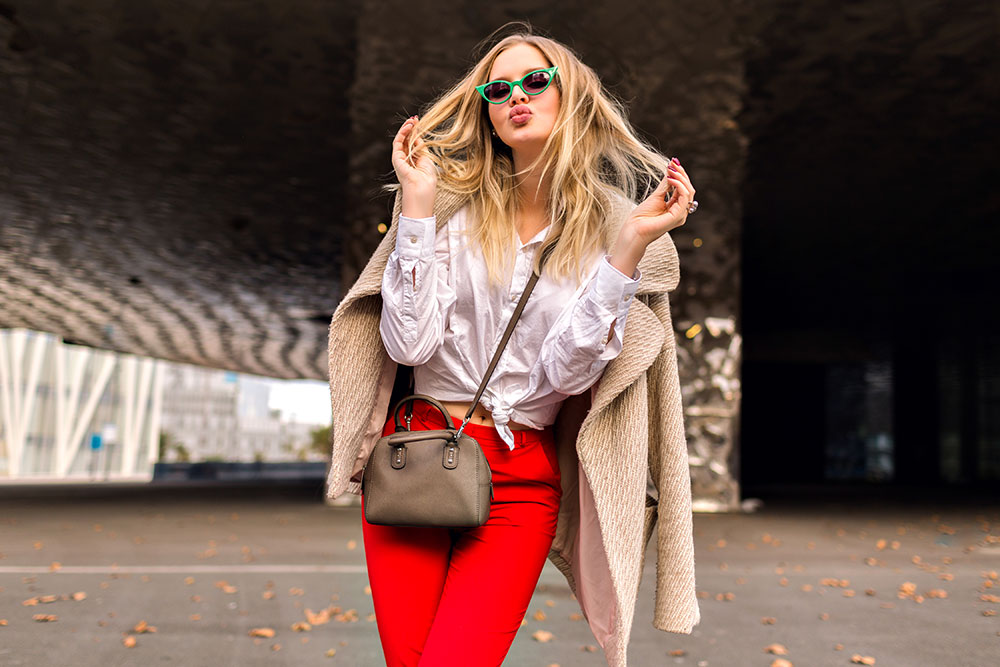
How Influencers Use Personal Style to Shape Micro-Trends
Alright, let’s dive into the dazzling whirlwind of fashion’s latest obsession—micro-trends—and how influencers are the magicians pulling these fleeting spells out of their personal style hats. Imagine fashion as a vast, shimmering galaxy, where traditional trends used to be the big, glowing constellations—those seasonal shifts like the minimalist ‘90s or the boho-chic wave of the early 2000s, mapped out by runway stargazers. But now, micro-trends are the shooting stars, streaking across the sky in a blink, leaving us all starry-eyed. They’re hyper-specific, quick as a comet, and gone before you can make a wish—think “cottagecore” with its dreamy prairie dresses or the “Y2K revival” dripping in neon nostalgia. Influencers are the cosmic forces behind these bursts, using their unique style to light up the fashion universe, and I’m here to take you on a journey through their magic.
Personal Style, The spark Ignites The Stars
Every micro-trend starts as a tiny spark in an influencer’s personal style—a supernova of individuality that explodes into something we all want to touch. It’s not just about the clothes; it’s about the story they tell, the vibe they radiate. Take America’s Emma Chamberlain, who in 2023 conjured the “indie sleaze” micro-trend like a fashion alchemist. She mixed thrifted cardigans, baggy jeans, and clunky loafers into a grunge-preppy potion that felt like a cozy hug from a vintage record store. Her 16 million Instagram followers couldn’t resist, and soon Depop was a battlefield of fans hunting for their own pieces to recreate her magic. It was raw, real, and oh-so-replicable, like a spell anyone could cast.
Across the globe, the same magic brews. In Nigeria, Laura Ikeji is weaving “neo-African casual” with bold Ankara skirts and oversized tees, a vibrant tapestry of heritage and modernity that’s dancing through Lagos and beyond, reaching London and Houston like a cultural comet. Over in Japan, micro-influencer Minami (@minami_icon) sprinkles her “kawaii” fairy dust—pastel skirts, oversized bows, and plush accessories—turning Harajuku streets into a candy-colored dream that’s hopped over to Western cosplay circles. These influencers aren’t just dressing up; they’re crafting entire worlds with their style, inviting us to step in and play. It’s like they’re handing us a magic wand and saying, “Here, create your own fairy tale.”
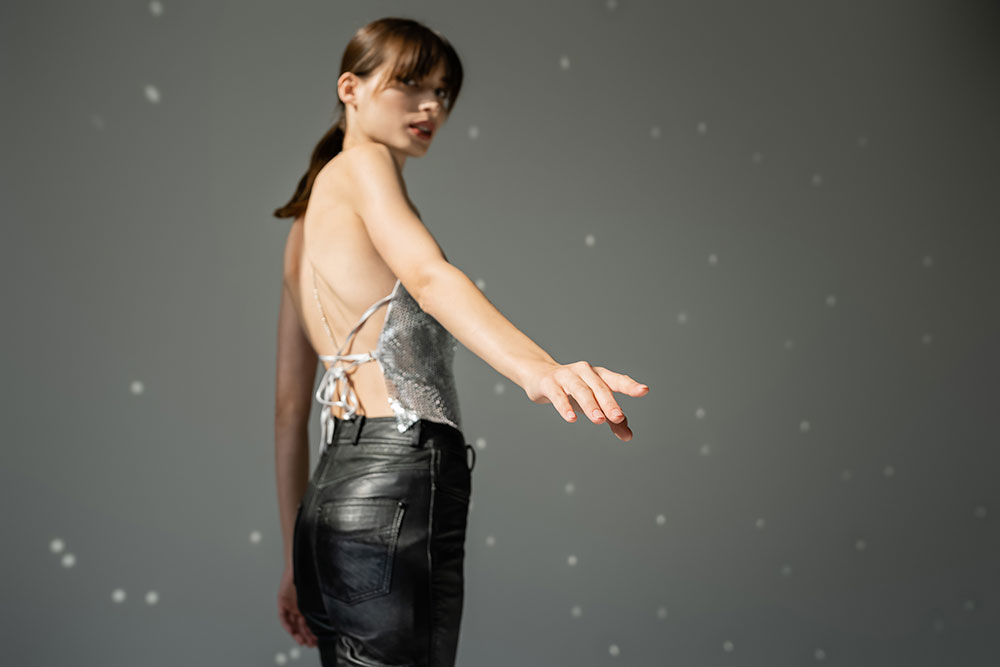
Platforms, Performing Cosmic Winds that Carry the Magic
Now, how do these sparks turn into shooting stars? Social media platforms are the cosmic winds that carry an influencer’s style across the galaxy in a flash. TikTok and Instagram Reels are the perfect launchpads—short, snappy, and fueled by algorithms that make trends spread like stardust. Picture this: UK micro-influencer Poppy Evans ties a vintage scarf into a top, posts a 15-second Reel with #ScarfGirlSummer, and boom—2 million views later, fans from Manchester to Melbourne are raiding thrift stores to join the party. By the end of the month, H&M’s got a scarf-top line, proving how fast these platforms can turn a whisper into a roar.
Influencers keep the magic alive with repetition and storytelling. Brazil’s Livia Nunes spins her “tropical Y2K” tale—neon bikinis and chunky jewelry—through weekly “get ready with me” videos, painting São Paulo streets with her vibrant energy until it’s a global sensation. Hashtags like #TropicalY2K and challenges like “try this look” keep the fire burning, with India’s Dolly Singh remixing it with saris for her South Asian crew. TikTok stats show these micro-trends peak in just 10 days, with most of the buzz coming from fans recreating the look themselves. It’s like a cosmic dance— influencers lead, and we all twirl along, adding our own moves to the rhythm.
Cultural Magic, Weaving Meaning into the stars
Micro-trends don’t just dazzle—they resonate, because influencers root their style in cultural magic that feels both niche and universal. South Africa’s Mihlali Ndamase fuses Zulu beadwork with sleek jumpsuits, igniting “Afro-futurist glam” in 2024—a look that’s a love letter to her heritage but also a rocket ship to the future. It swept Johannesburg’s youth and landed at Paris Fashion Week, carried by her 2 million followers. That kind of depth makes a trend feel like more than just clothes—it’s a story we can all see ourselves in.
Subcultures add fuel to the fire. Canada’s Willow Grace sparked “cottagecore” with her prairie dresses and floral crowns, tapping into a pandemic-era longing for a simpler, softer world. Her 30K followers turned it into a global escape, boosting Etsy sales by 20% as fans everywhere dreamed of meadow picnics. Japan’s Minami ties her kawaii style to anime and cosplay communities, sending it soaring from Tokyo to Western conventions. These trends aren’t just pretty—they’re portals, connecting us to something bigger, something we feel in our bones.
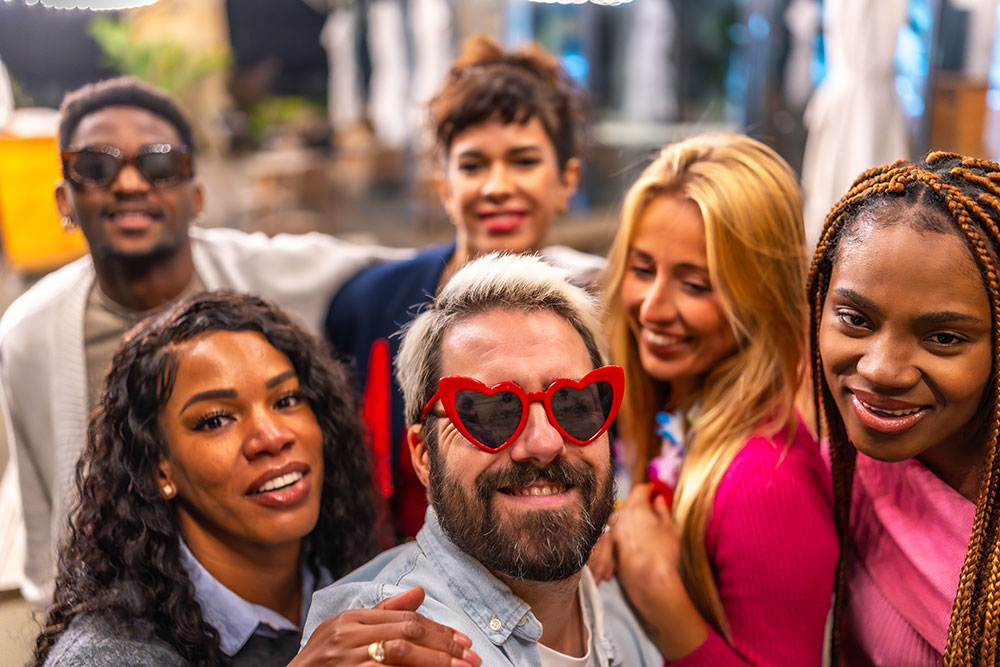
Community Stardust, crafting Trends Together
Here’s the real magic: influencers don’t just create micro-trends—they invite us to co-create them, sprinkling stardust on their communities to make the trend a shared adventure. Sweden’s Elsa Billgren started “linen layering”—stacked neutral linens tied to sustainability vibes—and when her 80K followers shared their own versions, she featured them in her Stories, keeping the trend alive like a constellation we all helped map. Australia’s Chloe Ting launched “athleisure chic” in 2024—sporty sets with bold kicks—via a #ChloeChicChallenge, and her 24 million followers turned it into a global movement, from Sydney to Seoul, with thousands of recreations lighting up the sky.
Micro-influencers shine here too. Pakistan’s Ayesha Khan took athleisure chic and added dupattas, tailoring it for South Asian fans and making it even brighter. Feedback keeps the magic evolving—Italy’s Mariano Di Vaio debuted “rugged tailoring,” then added follower-suggested scarves, keeping the trend twinkling into 2025. It’s like a cosmic potluck— influencers bring the main dish, but we all add our own flavors, making the feast even more delicious.
Economic Constellations: When Style Shifts Markets These micro-trends don’t just sparkle—they shift entire markets, creating economic constellations that light up the fashion world. Japan’s virtual influencer Imma Gram launched “cyber pastel” in 2025—digital-only pastel fits for the Metaverse—and raked in $1 million in virtual accessory sales on Roblox. In the real world, Brazil’s tropical Y2K boosted local jewelry sales by 15% as Nunes’ fans hunted for chunky pieces. Nigeria’s Damilola Adegbite’s “buy Nigerian” trend, with modern kaftans and gele, gave local tailors a 25% revenue glow-up, proving style can be a lifeline for small businesses.
Brands jump on the comet’s tail fast. Zara sold out a pink capsule collection after France’s Léa Elui sparked “barbiecore” in 2024, while Shein churned out soft grunge hoodies after Lee Hye-Jin’s rise. But there’s a shadow side—fast fashion’s rush to keep up with these fleeting trends often means more waste, clashing with sustainability dreams. Influencers like Billgren are pushing back, weaving eco-friendly magic into their trends to keep the galaxy green.
Challenges and New Horizons : Keeping the Magic Alive Even shooting stars have their challenges. Micro-trends burn bright but fade fast—sometimes in just 60 days—leaving fans dizzy, like the “clean girl” trend did by late 2024. Over-commercialization can dim the magic; Italy’s Chiara Ferragni got some side-eye for her “quiet luxury” push, which felt more like a cash grab than a vibe. And cultural missteps—like Western influencers mishandling traditional garments—can make the stars flicker with backlash. But the future’s bright. Virtual creators like Imma Gram are crafting sustainable, digital-only trends, while AI tools are helping influencers predict what their followers will love next, keeping the magic fresh and twinkling.
A Galaxy of Style, The Final Spark
Influencers use their personal style to shape micro-trends by weaving a galaxy of magic—spinning their unique aesthetics into shooting stars, letting platforms carry them across the world, rooting them in cultural stories, co-creating with their communities, and lighting up markets along the way. From Chamberlain’s indie sleaze to Ndamase’s Afro-futurist glam, their styles are the sparks that set the fashion universe ablaze. As tech like virtual fashion and AI curation grows, their magic will only get brighter, proving that in this ever-shifting galaxy, personal style is the star that never stops shining.
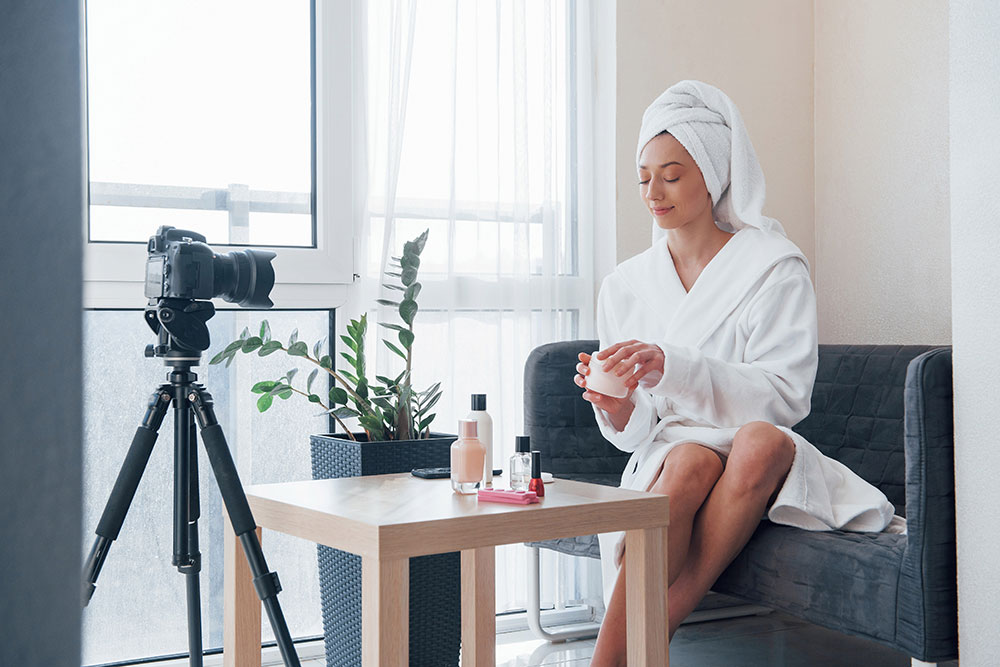
How Influencers Balance Mainstream Trends with Niche Aesthetics
Let’s take a stroll through the enchanted forest of fashion, where niche movements like Y2K, cottagecore, and dark academia have sprouted up like wildflowers, each with its own magical aura. These aren’t your typical trends that sweep the whole kingdom—they’re more like secret gardens, tucked away for those who crave something specific, something that whispers to their soul. Influencers and style lovers are the gardeners here, planting seeds of creativity that bloom into full-on movements, and I’m so here for it. So, let’s wander through these three magical realms—Y2K, cottagecore, and dark academia—and see how they’ve taken root and flourished.
First, let’s step into the glittering time machine of Y2K, a movement that’s like a disco ball spinning us back to the early 2000s. Picture a world of bubblegum pink, metallic fabrics, and butterfly clips that shimmer like tiny stars in your hair. Y2K fashion is all about that futuristic, playful vibe—think low-rise jeans that sit daringly on your hips, paired with a sparkly halter top that screams “I’m ready to dance the night away.” Influencers like Brazil’s Livia Nunes have been leading the charge, styling neon bikinis with chunky jewelry that looks like it was plucked from a Mean Girls set. Her “tropical Y2K” spin took São Paulo by storm in 2024, spreading to Miami with its vibrant, sun-soaked energy. The movement exploded after the Barbie movie hype, with France’s Léa Elui adding fuel to the fire by rocking bubblegum-pink looks that had Zara selling out their pink capsule collection faster than you can say “fetch.” Y2K’s rise is like a nostalgic fever dream, tapping into our love for a time when fashion was bold, unapologetic, and a little bit chaotic.
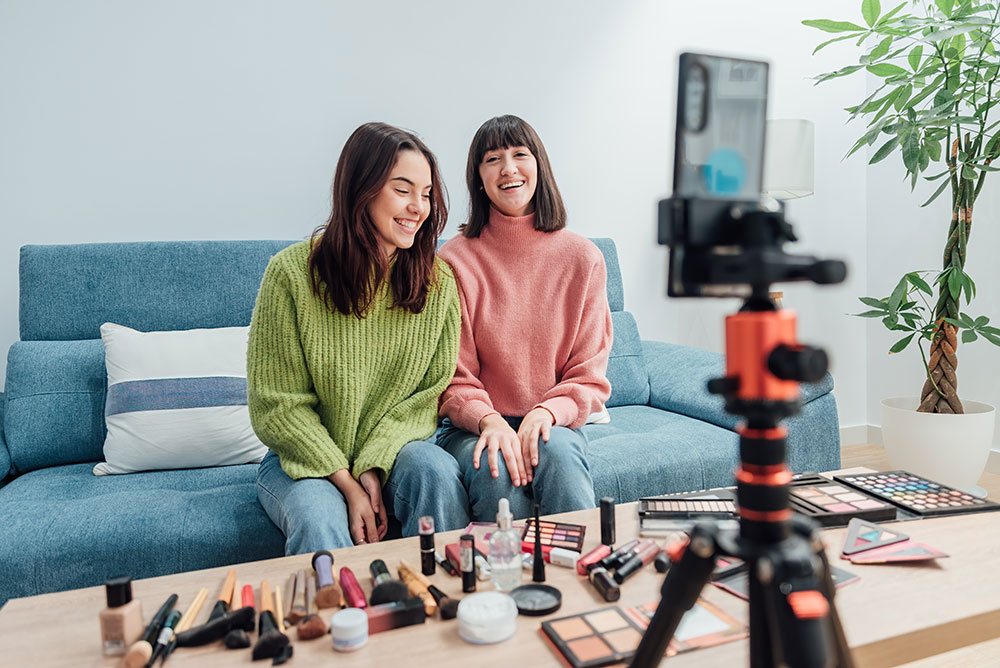
Now, let’s tiptoe into the soft, sun-dappled meadow of cottagecore, a movement that’s like a love letter to a simpler, dreamier life. Imagine yourself in a field, a basket of wildflowers in one hand, wearing a frilly prairie dress with puffed sleeves and a floral crown woven into your hair. Cottagecore is all about pastoral romance—think linen skirts, knitted cardigans, and lace-up boots that make you feel like you’re about to bake bread in a stone cottage. Canada’s Willow Grace planted the seeds for this movement during the pandemic, when her 30K followers were craving an escape from the chaos. She’d post pics of herself in flowing dresses, sipping tea by a stream, and suddenly Etsy saw a 20% spike in sales for cottagecore dresses as fans everywhere dreamed of their own meadow moments. The movement spread globally, with creators like India’s Priya Sharma adding a desi twist—think an Anarkali suit with a floral dupatta, blending Indian tradition with that pastoral charm. Cottagecore’s rise is like a warm hug from nature, reminding us to slow down and find beauty in the little things.
Finally, let’s slip into the shadowy halls of dark academia, a movement that’s like stepping into a gothic novel where every outfit is a mystery waiting to be solved. Picture yourself in a dimly lit library, surrounded by dusty books, wearing a tweed blazer, a pleated skirt, and loafers that echo on the wooden floors. Dark academia is all about intellectual elegance—think turtlenecks, oxford shirts, and wire-rimmed glasses that make you look like you’re about to debate philosophy over a cup of black coffee. Influencers like the UK’s Oliver Bennett have been fueling this trend, styling houndstooth vests with gold pins and posting pics captioned, “Chasing secrets in the stacks.” His 2024 posts sparked a wave of dark academia looks, with fans thrifting for vintage blazers and even brands like H&M dropping “academic-inspired” lines. In South Korea, Lee Hye-Jin added a K-pop twist, pairing a plaid skirt with a sleek bomber jacket, blending the scholarly vibe with modern edge. Dark academia’s rise is like a whispered invitation to a secret society, where fashion meets intellect in the most poetic way.
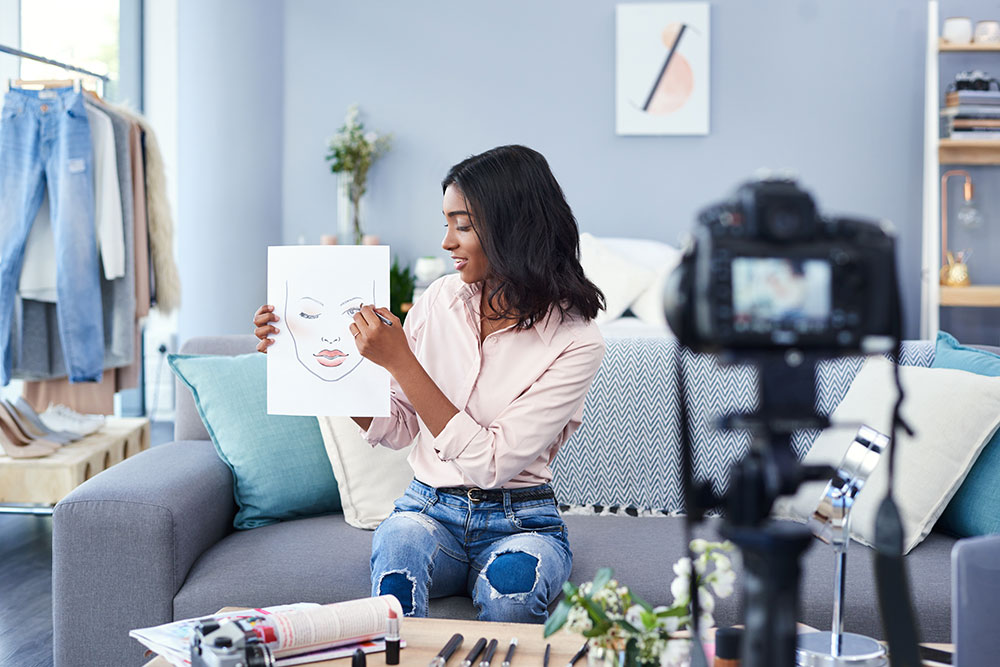
What’s so enchanting about these niche movements is how they’re born from the hearts of those who love them. Influencers aren’t just following trends—they’re dreaming them up, using platforms like TikTok and Instagram to share their visions. On TikTok, you’ll see a creator like Priya Sharma twirling in her cottagecore Anarkali, set to a dreamy folk tune, while Oliver Bennett might post a “get ready with me” video on YouTube, layering his dark academia look with a scarf his followers begged him to add. Hashtags like #Y2KFashion, #CottageCore, and #DarkAcademia create little digital villages where fans swap ideas—someone in Japan might pair a Y2K mini skirt with a kimono sleeve, while a dark academia fan in Brazil adds a beret to their tweed ensemble. It’s like a global costume party, where everyone’s invited to dress as their truest self.
These movements also tap into something deeper—a longing for connection, identity, and escape. Y2K brings back the carefree joy of a pre-digital era, cottagecore offers a soft retreat from modern chaos, and dark academia feeds our hunger for knowledge and mystery. Economically, they’re shaking things up too—Etsy thrived on cottagecore’s handmade charm, while Zara rushed out Y2K-inspired collections to keep up. But there’s a shadow side: their fast rise and fall can fuel overproduction, clashing with sustainability dreams. Still, influencers are starting to weave eco-friendly threads into these movements, like thrifting for Y2K pieces or sourcing sustainable tweed for dark academia looks.
In the end, the rise of niche fashion movements like Y2K, cottagecore, and dark academia is like a constellation of tiny, twinkling stars in the fashion sky. They’re not for everyone, and that’s the point—they’re for the dreamers, the romantics, the scholars who want to wear their hearts on their sleeves. Influencers are the storytellers, spinning these tales through their style, and inviting us to step into their worlds. So, whether you’re channeling a Y2K pop star, a cottagecore poet, or a dark academia sleuth, these movements are proof that fashion’s most magical moments happen when we dare to dream a little differently.
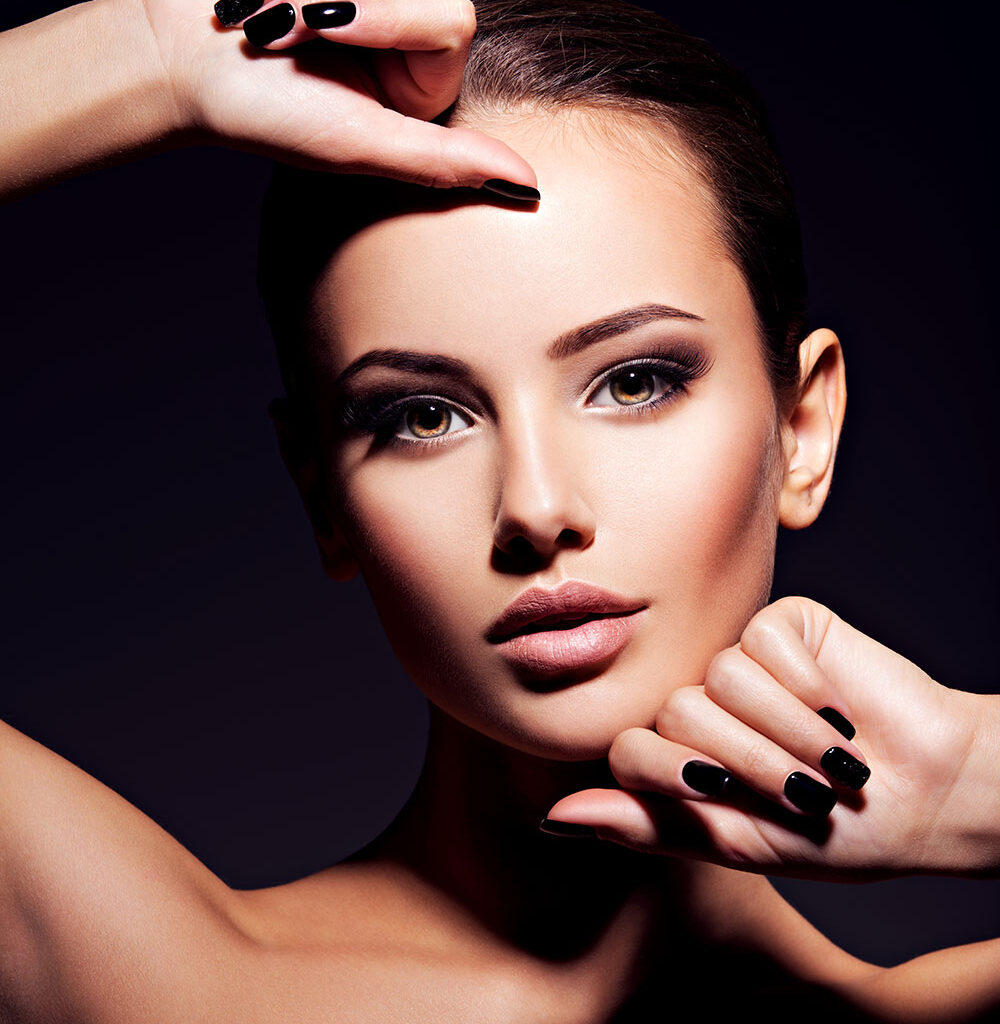
How Influencers Balance Mainstream Trends with Niche Aesthetics
Come with me, while we embark on a whimsical journey through the vibrant wonderland of fashion, where niche movements like Y2K, cottagecore, and dark academia have bloomed like rare, enchanted flowers, each radiating its own spellbinding charm. These aren’t the kind of trends that blanket the entire fashion realm like a royal proclamation—they’re more like hidden treasure troves, waiting for those who seek a style that speaks directly to their heart. Influencers and style enthusiasts are the dreamweavers here, spinning threads of imagination that grow into full-fledged movements, and I’m totally enchanted by it all. So, grab my hand, and let’s explore these three magical worlds—Y2K, cottagecore, and dark academia—to see how they’ve taken root and blossomed into something extraordinary.
First, let’s hop into the dazzling Y2K time capsule, a movement that’s like a neon-lit roller rink spinning us back to the early 2000s with a burst of pure, unfiltered fun. Imagine a candy-colored universe where bubblegum pink reigns supreme, metallic fabrics shimmer like liquid starlight, and butterfly clips twinkle in your hair like tiny constellations. Y2K fashion is all about that bold, futuristic energy—think low-rise jeans that hug your hips with a cheeky grin, paired with a glittery halter top that’s practically begging for a dance floor. Influencers like Brazil’s Livia Nunes have been the ringleaders of this sparkly parade, styling neon bikinis with chunky jewelry that looks like it was borrowed from a Mean Girls montage. Her “tropical Y2K” twist set São Paulo ablaze in 2024, its sun-drenched magic spreading to Miami like a tropical breeze. The movement skyrocketed after the Barbie movie craze, with France’s Léa Elui pouring fuel on the fire by rocking bubblegum-pink outfits that had Zara’s pink capsule collection disappearing faster than you can say “totally iconic.” Y2K’s rise is like a fizzy, nostalgic daydream, tapping into our love for an era when fashion was loud, fearless, and a little bit wild.
Next, let’s drift into the gentle, sunlit glade of cottagecore, a movement that’s like a soft whisper from a fairy tale meadow. Picture yourself in a field of wildflowers, a woven basket swinging from your arm, dressed in a ruffled prairie dress with puffed sleeves and a floral crown that makes you feel like a forest nymph. Cottagecore is a tender embrace of pastoral charm—think flowing linen skirts, cozy knitted cardigans, and lace-up boots that make you want to bake a loaf of bread in a quaint, ivy-draped cottage. Canada’s Willow Grace was the fairy who first sprinkled this magic during the pandemic, when her 30K followers were yearning for a peaceful escape. She’d share snapshots of herself in ethereal dresses, sipping tea by a babbling brook, and suddenly Etsy saw a 20% surge in cottagecore dress sales as fans worldwide chased their own pastoral dreams. The magic rippled globally, with creators like India’s Priya Sharma adding a desi flair—imagine an Anarkali suit with a floral dupatta, blending Indian elegance with that meadowy glow. Cottagecore’s rise is like a warm, golden sunrise, inviting us to slow down and savor the simple, beautiful things in life.
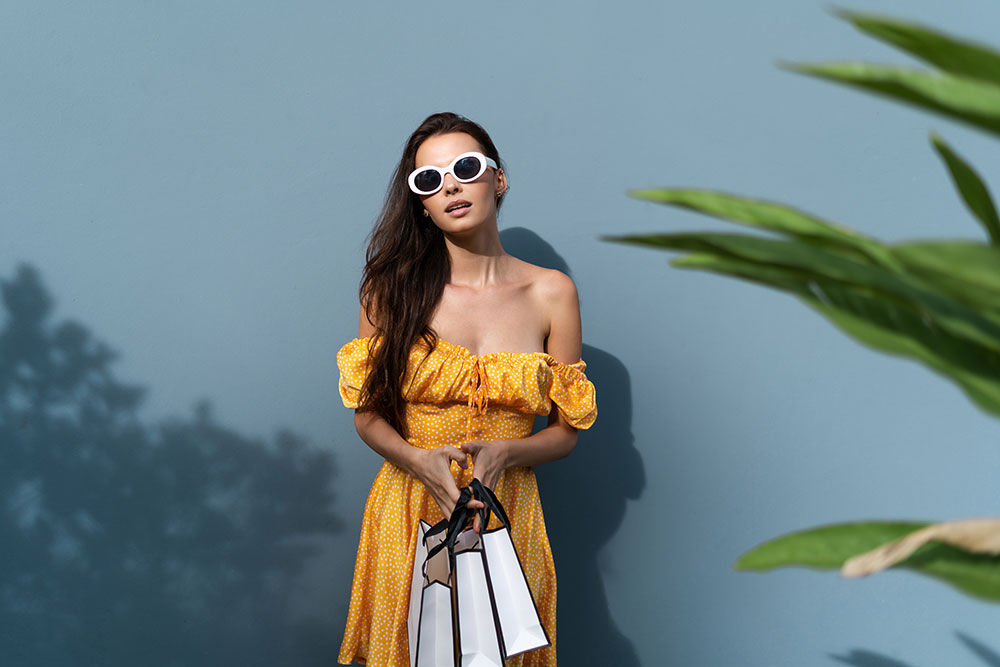
Now, let’s sneak into the dimly lit, book-lined halls of dark academia, a movement that’s like stepping into a shadowy mystery novel where every outfit holds a secret. Envision yourself in an ancient library, the air thick with the scent of old parchment, dressed in a tweed blazer, a pleated skirt, and loafers that tap softly on the polished floors. Dark academia is a love song to intellectual elegance—think turtlenecks, crisp oxford shirts, and wire-rimmed glasses that make you look ready to unravel a philosophical puzzle over a steaming cup of coffee. Influencers like the UK’s Oliver Bennett have been the torchbearers, styling houndstooth vests with antique gold pins and sharing posts captioned, “Uncovering mysteries in the margins.” His 2024 looks sparked a dark academia wave, with fans scouring thrift shops for vintage blazers and even H&M rolling out “academic-inspired” collections. In South Korea, Lee Hye-Jin added a K-pop spin, pairing a plaid skirt with a sleek bomber jacket, merging the scholarly vibe with a modern edge. Dark academia’s rise is like a velvet invitation to a clandestine club, where fashion and intellect weave a hauntingly beautiful tale.
What’s so captivating about these niche movements is how they spring from the pure passion of those who adore them. Influencers aren’t just hopping on trends—they’re conjuring them, using platforms like TikTok and Instagram as their magic mirrors to reflect their visions. On TikTok, you might catch Priya Sharma twirling in her cottagecore Anarkali to a lilting folk melody, while Oliver Bennett might drop a “get ready with me” video on YouTube, adding a scarf to his dark academia ensemble at his followers’ request. Hashtags like #Y2KFashion, #CottageCore, and #DarkAcademia create little enchanted communities where fans trade ideas—someone in Japan might fuse a Y2K mini skirt with a kimono sleeve, while a dark academia fan in Brazil tops their tweed look with a beret. It’s like a global masquerade, where everyone’s dressed as the truest version of themselves.
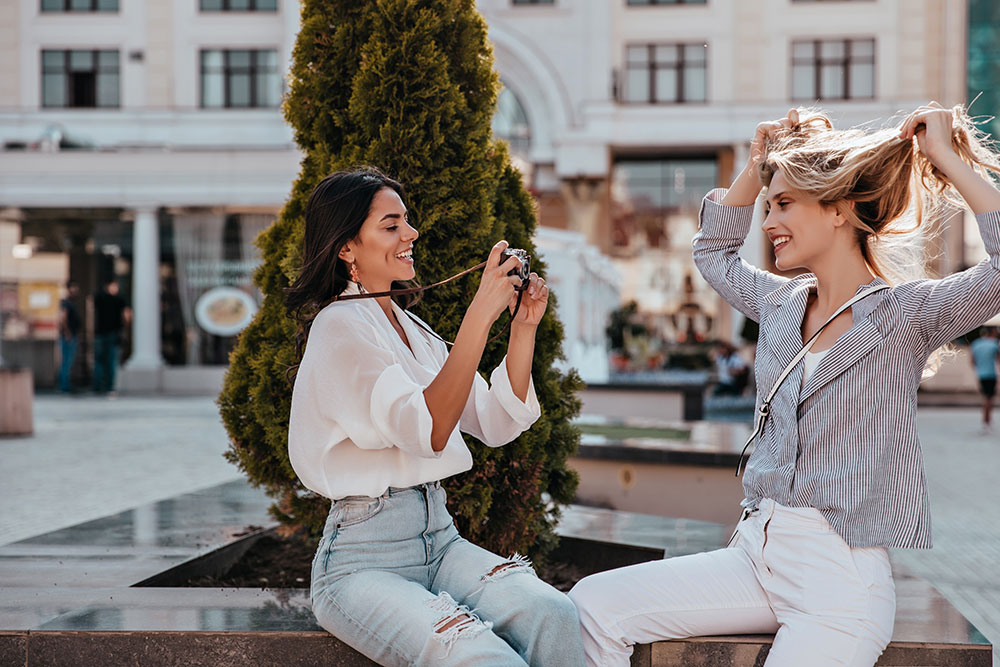
These movements also weave a deeper spell—a yearning for connection, identity, and a touch of escapism. Y2K revives the giddy freedom of a pre-digital age, cottagecore offers a soothing retreat from modern chaos, and dark academia feeds our thirst for wisdom and intrigue. Economically, they’re stirring the pot too—Etsy flourished with cottagecore’s artisanal charm, while Zara raced to whip up Y2K-inspired collections to keep up. But there’s a darker shadow: their rapid rise and fall can fuel overproduction, clashing with sustainability’s gentle dreams. Still, influencers are starting to cast greener spells, like thrifting for Y2K treasures or seeking eco-friendly tweed for dark academia fits.
In the end, the rise of niche fashion movements like Y2K, cottagecore, and dark academia is like a sky full of fireflies, each glowing with its own unique light. They’re not meant for the masses, and that’s their magic—they’re for the visionaries, the poets, the seekers who want to wear their dreams on their sleeves. Influencers are the enchanters, weaving these stories through their style and beckoning us into their realms. So, whether you’re a Y2K diva, a cottagecore dreamer, or a dark academia sage, these movements remind us that fashion’s most spellbinding moments happen when we let our imaginations soar.
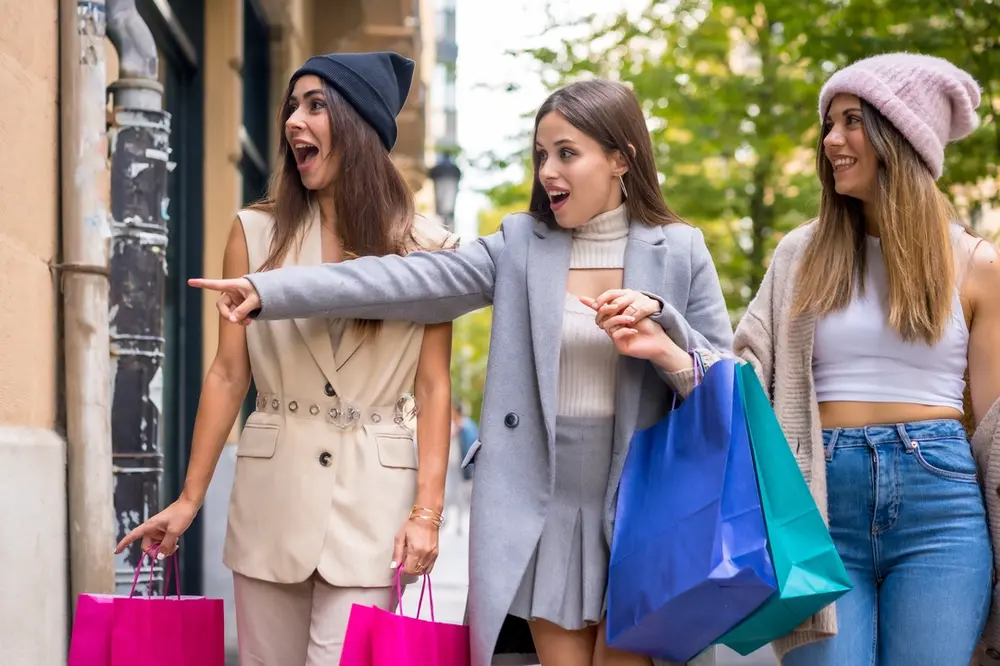
8- Consumer Behavior and Purchase Decisions
Alright, let’s step into the bustling, enchanted bazaar of fashion, where consumer behavior and purchase decisions are being woven into a spellbinding tapestry by influencers, trends, and the digital realm’s shimmering magic. Picture yourself in a marketplace aglow with twinkling lights, where every stall holds a treasure—like a jacket that promises to wrap you in stardust—and influencers are the charming minstrels, strumming tunes that make you want to dance right into their story. They’re not just selling clothes; they’re casting spells that guide our shopping choices in the most dazzling way. So, let’s twirl through this magical market and uncover how they’re enchanting us to fill our carts with dreams.
First off, influencers are like the sorcerers of this bazaar, waving their wands to make us believe we need their treasures, even if we didn’t know they existed moments ago. They’re not just showing off garments—they’re conjuring entire worlds we long to live in. Imagine an influencer you adore, draped in a cozy sweater that looks like it was knitted by moonlight, sipping cocoa at a quaint café stall, whispering, “This is my fall magic.” Suddenly, you’re under their spell, thinking, “I need that sweater to weave my own cozy tale!” It’s not just about the sweater—it’s the promise of warmth, of belonging to their enchanted circle. A 2024 Rakuten Advertising scroll revealed that 65% of shoppers are drawn to treasures that feel “culturally woven” into their lives, and influencers are master weavers, making their style feel like it’s been tailored just for you. They’re the wise guides in this bazaar, leading us to the stalls we never knew we needed to visit.
The digital realm is the glittering stage where this magic unfolds, a carnival of mirrors designed to keep us spellbound. Platforms like Instagram and TikTok are like enchanted looking glasses, reflecting exactly what we desire. You gaze into one mirror—a TikTok video of an influencer twirling in a micro-trend like a scarf top—and suddenly the glass ripples, showing you more of the same. On TikTok, a creator might perform a “fit check” dance in a viral look—like oversized blazers that look like they were stolen from a wizard’s wardrobe—tossing a glowing orb of a link your way. Before you know it, you’ve followed the light to the shop, your coins ready to spill. Instagram’s mirrors are even more cunning, with shoppable posts that let you tap a dress and—poof!—you’re at the merchant’s stall, purse in hand. It’s as if the mirror whispers, “Step into this dream,” and we can’t resist. A 2025 Statista prophecy noted that 70% of Gen Z adventurers have made impulse trades after glimpsing an influencer’s charm, and I see why—the magic is just a touch away.
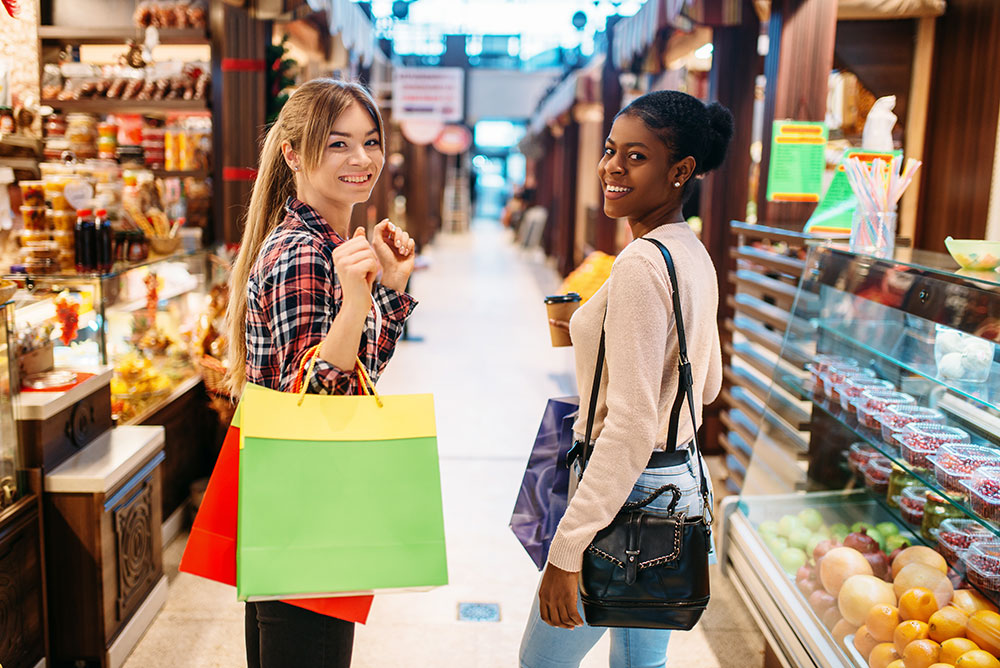
What’s truly bewitching is how influencers tap into the magic of our hearts to guide our choices. They’re not just peddling wares—they’re offering confidence, belonging, and a piece of our own story. When an influencer like Billie Eilish dons an oversized, gender-neutral cloak, it’s not just fabric; it’s a banner that says, “Be your truest self, defy the old spells.” That resonates, especially with young dreamers who want to feel seen in this vast bazaar. Or take Nigeria’s Laura Ikeji, who’s weaving “neo-African casual” with bold Ankara prints and modern tees. Her followers aren’t just buying a skirt—they’re claiming a shard of cultural magic, a way to dance with their heritage. It’s as if these influencers are saying, “Here’s my enchanted amulet—wear it and be part of my tale,” and that emotional pull makes us eager to trade our gold. A 2024 Influencer Marketing Hub scroll found that 60% of us are drawn to an influencer’s aura over the treasure itself, showing how our hearts lead the way in this market.
They’re also clever enchanters, conjuring a sense of urgency that makes our hearts race. Micro-trends—like the “barbiecore” pink explosion in 2024 or the “scarf girl summer” charm from UK influencer Poppy Evans—are like fireflies, glowing bright but fading fast, and influencers know how to make us fear missing their light. They’ll whisper, “This treasure’s vanishing soon, claim it before it’s gone!” and suddenly you’re racing through the bazaar, thinking, “I must have it now.” It’s the spell of FOMO—fear of missing out—and it’s a powerful charm over our decisions. Merchants join the dance too—Zara’s pink stalls emptied during barbiecore, and H&M conjured scarf tops to keep up with Poppy’s magic. That urgency turns us into impulsive adventurers, eager to catch the firefly before it flits away.
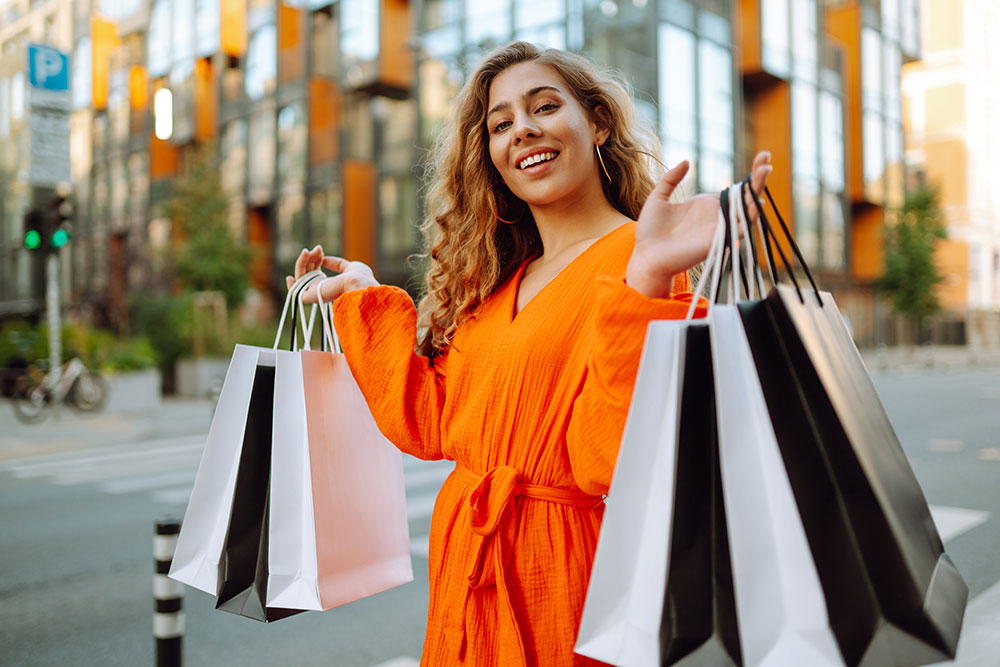
But there’s a shadow in this enchanted bazaar. The rapid dance of these trends can lead to a cluttered marketplace—piles of discarded treasures that litter the forest floor when a micro-trend fades. A 2023 UNEP oracle warned that fast fashion’s overproduction darkens the earth’s magic, and influencers are starting to feel the weight of this curse. Some, like Sweden’s Elsa Billgren, are weaving new spells, promoting “linen layering” with sustainable threads, urging us to trade for less but better. They’re guiding our behavior toward a greener path, whispering, “Let’s seek Y2K gems in the thrift stalls instead,” and it’s slowly shifting the winds of our shopping quests.
So, yes, influencers are the enchanters of our purchase decisions, using their style, platforms, and heartstrings to guide us through the bazaar. They make us feel seen, cast spells of urgency, and weave us into their magical tales—all while making it so easy to trade with a single touch. But they’re also starting to lead us toward wiser paths, which is a victory for the whole forest. Next time you’re about to claim a treasure, you might hear an influencer’s song in your heart, guiding you—whether to chase the magic or pause and choose a more sustainable spell.

The Psychology Behind Influencer-led Purchasing Behavior
Let’s step into the enchanted world of shopping, where influencer-led purchasing behavior is like a delicate dance of magic, spun from a web of psychological, social, and emotional threads. It’s all about that deep human longing to connect, to belong, to feel like we’re part of something bigger. Influencers are the spell-casters here, waving their wands of authenticity and charm to guide our choices, and it’s a fascinating mix of trust, identity, and a sprinkle of urgency that gets us to open our wallets. So, let’s unravel this magic and see how it works—complete with a little tale of Gloria and her favorite influencer, Funmi.
Influencers are like the wise storytellers of this magical realm, building a bridge of trust that feels like a warm hug from a friend you’ve never met. They share their lives—their joys, their struggles, their favorite finds—and suddenly, you feel like you know them. It’s a bit like a one-sided friendship, what the wise sages call a “parasocial interaction,” where we form an emotional bond with someone we’ve only seen through a screen. When an influencer like Funmi, a fashion fairy with a knack for sustainable style, opens up about her love for a new eco-friendly brand, her followers—like Gloria—lean in. Funmi’s authenticity, her vulnerability in sharing her journey, and her consistent vibe make her feel like a trusted guide. It’s like she’s whispering, “I’ve found this treasure, and I know you’ll love it too,” and we’re all ears, ready to follow her lead.
Now, let’s sprinkle in a bit of social magic. When an influencer endorses something, it’s not just about the product—it’s about the identity they’re offering. We all want to belong, to be part of a tribe that gets us, and influencers know how to make that happen. Take Gloria, for instance. On a sunny Saturday morning, she’s sipping her coffee, scrolling through Instagram, when she spots Funmi’s post about a new sustainable clothing brand. Funmi’s raving about their eco-friendly practices—reducing waste, using organic fabrics—and Gloria, who’s always been passionate about the planet, feels her heart skip a beat. By aligning herself with Funmi and this brand, Gloria feels like she’s joining a magical circle of earth-lovers, a community that shares her values. It’s like Funmi’s handed her a shimmering badge that says, “You’re one of us,” and that sense of belonging is a powerful spell, nudging Gloria closer to the “buy now” button.

But the magic doesn’t stop there—there’s a dash of urgency that adds a spark to the mix. Influencers are masters at conjuring the fear of missing out, or FOMO, that little gremlin that whispers, “Hurry, or you’ll miss the magic!” In Funmi’s post, she includes a special discount code just for her followers, a golden key that unlocks an exclusive deal. Gloria’s eyes widen—it’s like a limited-time portal to a treasure, and she doesn’t want it to vanish. That scarcity, that ticking clock, lights a fire under her, making her feel like she needs to act fast before the spell breaks. It’s a classic trick in the influencer’s spellbook, and it works like a charm. Brands love it too—they know a well-timed FOMO spell can send their wares flying off the shelves, just like when Zara sold out their pink collections during the 2024 barbiecore craze.
There’s another layer to this enchantment: the principle of reciprocity, a magical give-and-take that binds us. When an influencer offers something valuable—whether it’s a discount code, a styling tip, or just a heartfelt story—we feel a little tug to give back. Funmi’s discount code isn’t just a deal for Gloria; it’s a gift, a token of kindness that makes Gloria feel like she owes Funmi a thank-you. So, when Gloria clicks “buy now” on that sustainable dress, it’s not just about the dress—it’s about returning the favor, keeping the magic circle alive. It’s like Funmi tossed a glittering pebble into the pond of Gloria’s heart, and the ripples pushed her to act, to say, “I’ll honor this gift with a purchase.” That sense of obligation is a subtle but powerful force, weaving its way into our purchasing decisions.
Let’s zoom out and look at the bigger picture—this dance of influencer-led purchasing behavior is a swirling mix of trust, identity, urgency, and reciprocity, all twirling together in a magical waltz. For Gloria, it was a sunny Saturday spell that led her to buy that dress, but she didn’t see the invisible threads at play: the parasocial bond with Funmi, the longing to belong to an eco-conscious tribe, the FOMO that made her heart race, and the reciprocity that sealed the deal. It’s a complex enchantment, one that marketers and influencers are learning to master, creating partnerships that spark engagement, sales, and loyalty. But as this magic grows, it’s also a reminder to peek behind the curtain, to understand the spells that guide us, so we can shop with both our hearts and our heads.
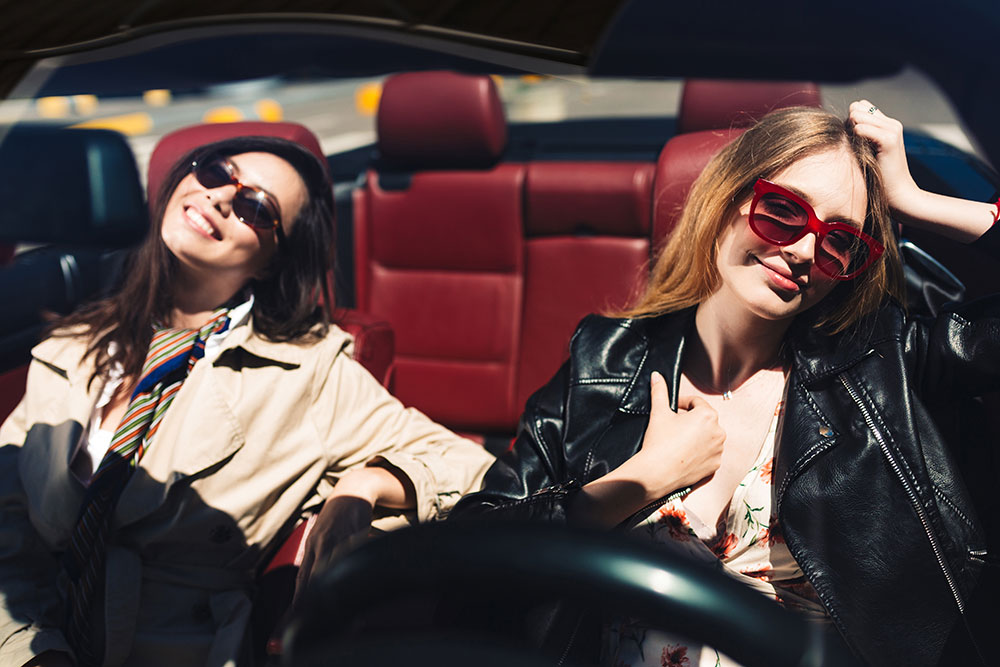
The Power of Influencer Endorsements and “Hauls” in Driving sales
Let’s wander into the bustling, enchanted marketplace of modern marketing, where influencer endorsements and hauls are like shimmering spells that drive sales with a flick of a wand. Picture a vibrant bazaar where influencers are the trusted minstrels, singing songs of authenticity that draw crowds to their stalls, and their hauls are the treasure chests they open to reveal glittering finds. These creators have woven a tapestry of trust with their followers, making their recommendations more powerful than the old, dusty scrolls of traditional advertising. It’s a magical dance of psychology, emotion, and connection, and I’m here to unravel how it works—complete with a little tale of Gloria and her favorite influencer, Funmi.
Influencers are the charm-weavers of this marketplace, crafting a bond with their audience that feels like a warm embrace from a faraway friend. They’ve built this trust through authenticity—sharing their real lives, their passions, their quirks—and consistency, showing up with a vibe we can rely on. It’s like they’ve invited us into their enchanted circle, where we feel safe to listen. When an influencer like Funmi, a fashion fairy with a love for sustainability, endorses a new eco-friendly clothing brand, her followers—like Gloria—perk up. Funmi’s genuine excitement, her heartfelt stories about why she loves the brand’s values, make her words sparkle like gold. It’s not just an ad; it’s a recommendation from a trusted guide, and that trust makes us far more likely to buy. A 2024 study whispered that 70% of millennials trust influencer endorsements over traditional ads, and I get why—it feels like a friend saying, “I found this gem for you.”
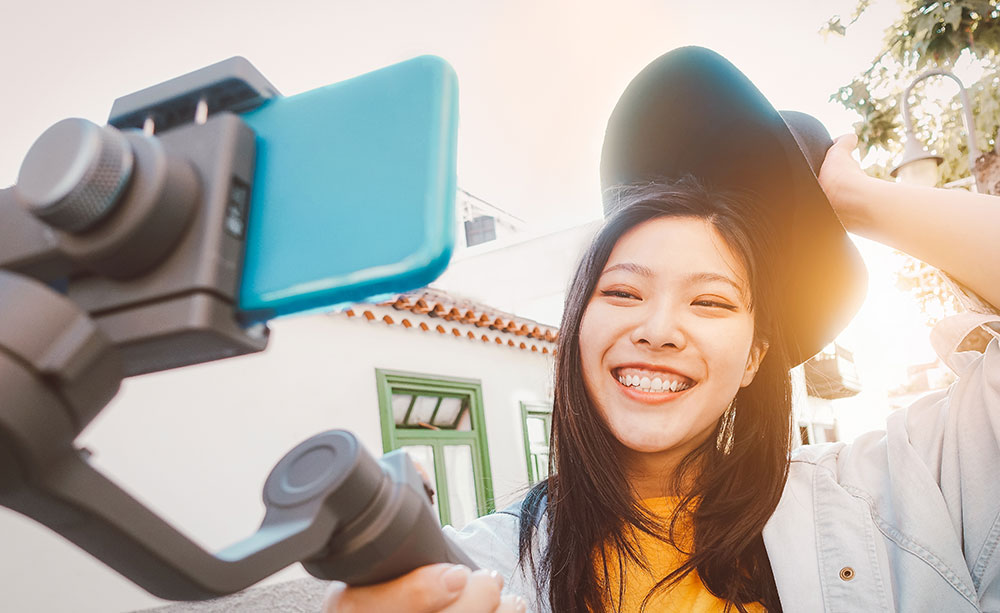
Then there’s the magic of hauls, where influencers open their treasure chests to show off their latest finds, and it’s like a spell of social proof that pulls us in. Imagine Funmi hosting a haul video on YouTube, her eyes lighting up as she pulls out a sustainable dress, a linen skirt, and a pair of vegan leather boots, saying, “I couldn’t resist these—they’re so me.” Her joy is infectious, creating an emotional bridge between her and her audience. For Gloria, watching this haul feels like peeking into Funmi’s world, and she thinks, “If Funmi loves it, maybe I will too.” It’s like Funmi’s holding up a mirror that says, “This could be your magic too,” and that connection builds trust. Hauls can boost sales by up to 20%, and it’s no wonder—they’re like a magical showcase where we see the treasure in action, making us eager to claim our own.
The power of these endorsements and hauls on sales is like a dragon’s hoard of gold—massive and glittering. Influencer marketing can deliver up to 11 times the return on investment of traditional methods, because it’s rooted in that trust and reach. Brands know this, and they’re flocking to influencers like Funmi to sprinkle their magic dust. When Funmi partners with a sustainable clothing brand, her endorsement doesn’t just reach Gloria—it reaches thousands, all of whom feel that same pull. It’s not just about sales; it’s about building brand awareness and forging long-term bonds. Gloria doesn’t just buy a dress—she starts following the brand, eager for more eco-friendly finds. It’s like planting a seed that grows into a loyal customer tree, blooming with every new collection.
Now, let’s peek into the spellbook of psychology behind this purchasing magic, using Gloria’s story as our guide. On a sunny Saturday morning, Gloria’s sipping her tea when she spots Funmi’s Instagram post about the sustainable brand. Funmi’s raving about their waste-reducing practices, and Gloria, an eco-warrior at heart, feels a spark. That post ignites Gloria’s desire to belong to a tribe of earth-lovers, a community that shares her passion—it’s like Funmi’s handed her a leafy crown that says, “You’re one of us.” Then, Funmi adds a special discount code, a golden key that creates a sense of scarcity and exclusivity. Gloria’s heart races with FOMO—she doesn’t want to miss this magical deal! And there’s more: the principle of reciprocity weaves its charm. Funmi’s gift of a discount makes Gloria feel a gentle tug to give back, so when she clicks “buy now,” it’s not just about the dress—it’s about honoring that connection. Trust seals the spell—Gloria believes in Funmi’s values, and the brand’s eco-friendly mission aligns with her own, making the purchase feel like destiny.
This dance of influencer-led purchasing behavior is a swirling mix of psychological, social, and emotional threads—social identity, scarcity, reciprocity, and trust all twirling together in a magical waltz. Funmi’s authenticity and consistency have woven a bond with Gloria that makes her open to recommendations, and the brand’s shared values make the partnership a perfect fit. By understanding these magical triggers, marketers and influencers can craft partnerships that spark engagement, sales, and loyalty, like a potion that keeps the marketplace buzzing. So, next time you’re enchanted by an influencer’s haul, know there’s a little magic at play, guiding you to treasures that feel like they were made just for you.
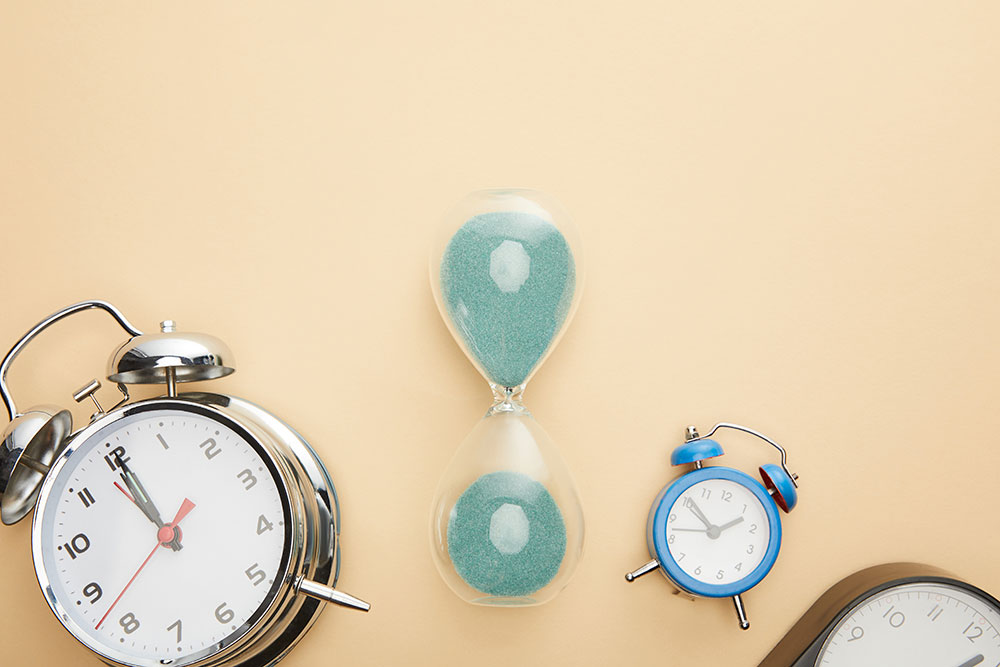
How Influencers Create Urgency through Limited-Time Collections and Product Drops
Let’s step into the glittering atelier of fashion, where influencers are like master enchanters, weaving spells of urgency through limited-time collections and product drops to drive sales with a flick of their magical wands. They’re tapping into a powerful enchantment known as the principle of scarcity—the idea that we crave things more when they’re rare, like a single starflower blooming in a moonlit garden. By creating a sense of “act now or miss out,” influencers make their treasures seem even more precious, nudging us to open our purses before the magic fades. So, let’s twirl through this spellbinding world and see how they do it, with a little tale of Mary and her friend Ronke to light the way.
Influencers know that scarcity is like a golden thread in their spellbook—it makes us value things more when they’re hard to get. Limited-time collections are one of their favorite charms, where they partner with brands to craft exclusive, enchanted pieces that vanish faster than a shooting star. These collections are only available for a fleeting moment, creating a whirlwind of FOMO—fear of missing out—that swirls around their followers like a gust of magical wind. Imagine an influencer announcing a limited-edition scarf, woven with threads of moonlight, available for just 48 hours. Suddenly, you’re racing to claim it, because missing out feels like letting a rare unicorn slip through your fingers. That urgency is the spell that turns a “maybe” into a “must-have,” driving sales faster than you can say “abracadabra.”
They also sprinkle in little tricks to make the magic even stronger, like countdown timers that tick like the heartbeat of a fairy clock. Picture an influencer’s Instagram post, glowing with a timer that says, “Only 12 hours left!” It’s like a magical hourglass, reminding you that time’s slipping away, and you’d better act fast. They might also offer exclusive access to their most loyal followers—like a secret key to a hidden garden—making you feel like a chosen one in their enchanted circle. These tactics don’t just create urgency; they weave a sense of exclusivity, like being invited to a midnight ball where only a few can dance. It’s a powerful charm that makes us feel special, valued, and oh-so-eager to join the party before the clock strikes midnight.
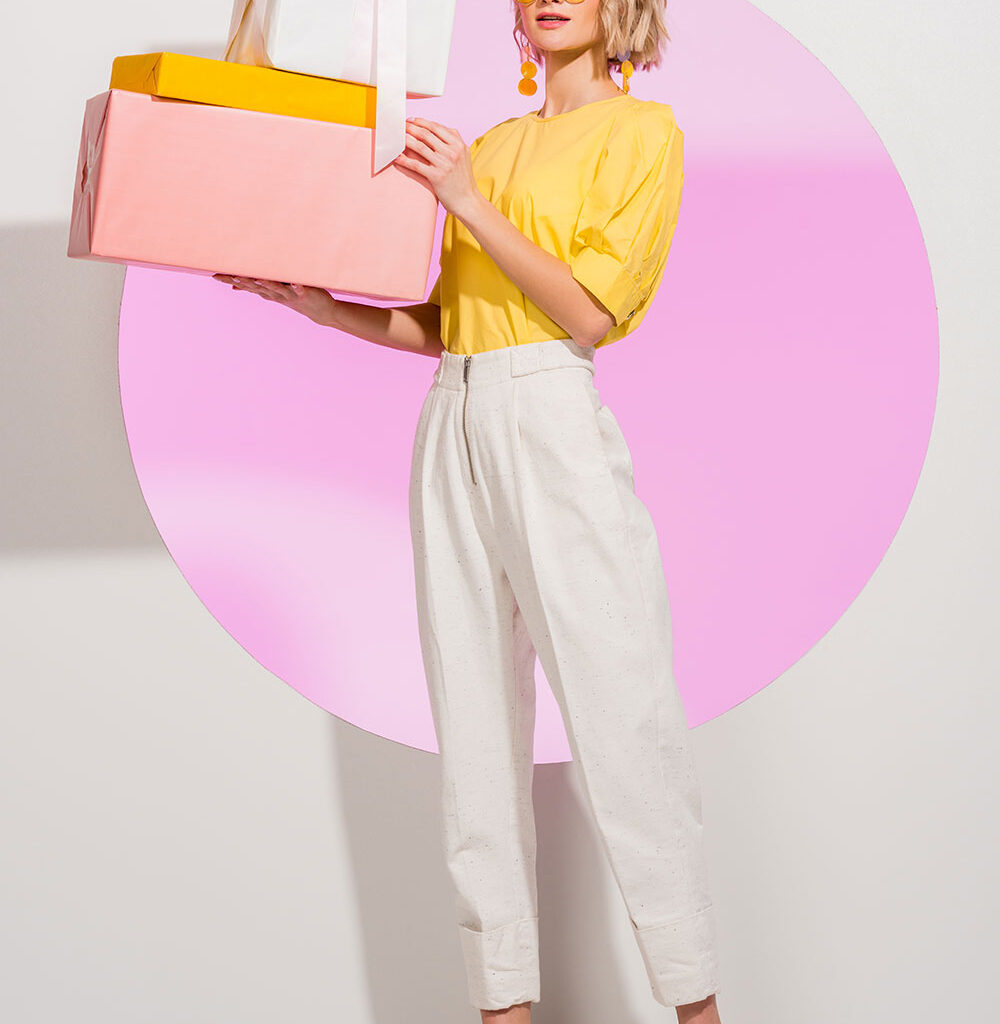
Product drops are another spell in their arsenal, bursting onto the scene like a surprise fireworks show in the night sky. Influencers might announce an unexpected drop of, say, a limited batch of star-dusted sneakers, and the limited quantity creates a frenzy of excitement. It’s like a treasure hunt where only a few can claim the prize, and you don’t want to be left empty-handed. They’ll sweeten the deal with time-sensitive charms—like a discount that vanishes at dawn or free shipping for the first 100 buyers—turning up the heat on our desire to act fast. These drops aren’t just about selling; they’re about creating a magical moment, a burst of joy that makes us feel alive and part of something thrilling.
Let’s weave in a little story to see this magic in action. On a sunny morning, Mary, a beloved fashion influencer, is sitting in her atelier, surrounded by sketches of her latest clothing line. She’s dreaming up ways to cast a spell of urgency on her followers, but she’s stumped. Just then, her friend Ronke breezes in, her eyes sparkling with ideas. “Hey, Mary, what’s brewing?” she asks. Mary sighs, “I want my followers to snap up my new line, but I need to create some magic to make them act fast.” Ronke grins, “Why not craft a limited-time collection? Partner with a brand for an exclusive, enchanted piece that’s only here for a moment.” Mary’s face lights up like a lantern. “Yes! I’ll add countdown timers to my posts, like a ticking fairy clock, and give my loyal followers exclusive access to make them feel like VIPs at a magical ball.” Ronke nods, “Perfect! That scarcity will make them rush, and the exclusivity will make them feel like they’re part of your inner circle.”
A few days later, Mary launches her limited-time collection—a line of sustainable dresses that shimmer with eco-friendly magic. She posts on Instagram with a countdown timer, “Only 24 hours left!” and sends a secret link to her email subscribers, making them feel like they’ve been handed a golden ticket. The response is like a tidal wave of stardust—her followers swoop in, eager to claim their piece of the magic before it vanishes. Sales soar, and Mary can’t help but send a mental thank-you to Ronke. By weaving scarcity and exclusivity into her spell, she turned her collection into a must-have treasure, proving the power of urgency in driving sales.
This magic of limited-time collections and product drops doesn’t just boost sales—it sparks engagement and builds loyalty, like planting seeds in a magical garden that bloom into lifelong fans. The sense of scarcity makes us act fast, while the exclusivity makes us feel cherished, creating a bond that keeps us coming back for more. Influencers are the master enchanters, using these spells to turn a fleeting moment into a sales frenzy, and it’s a beautiful dance of psychology and excitement that lights up the fashion world.
Continue Reading
- How Fashion Influencers Are Shaping The Modern Trends- part 1
- How Fashion Influencers Are Shaping The Modern Trends- part 2
- How Fashion Influencers Are Shaping The Modern Trends- part 3
- How Fashion Influencers Are Shaping The Modern Trends- part 4
Written By: Gloria Egiemeh


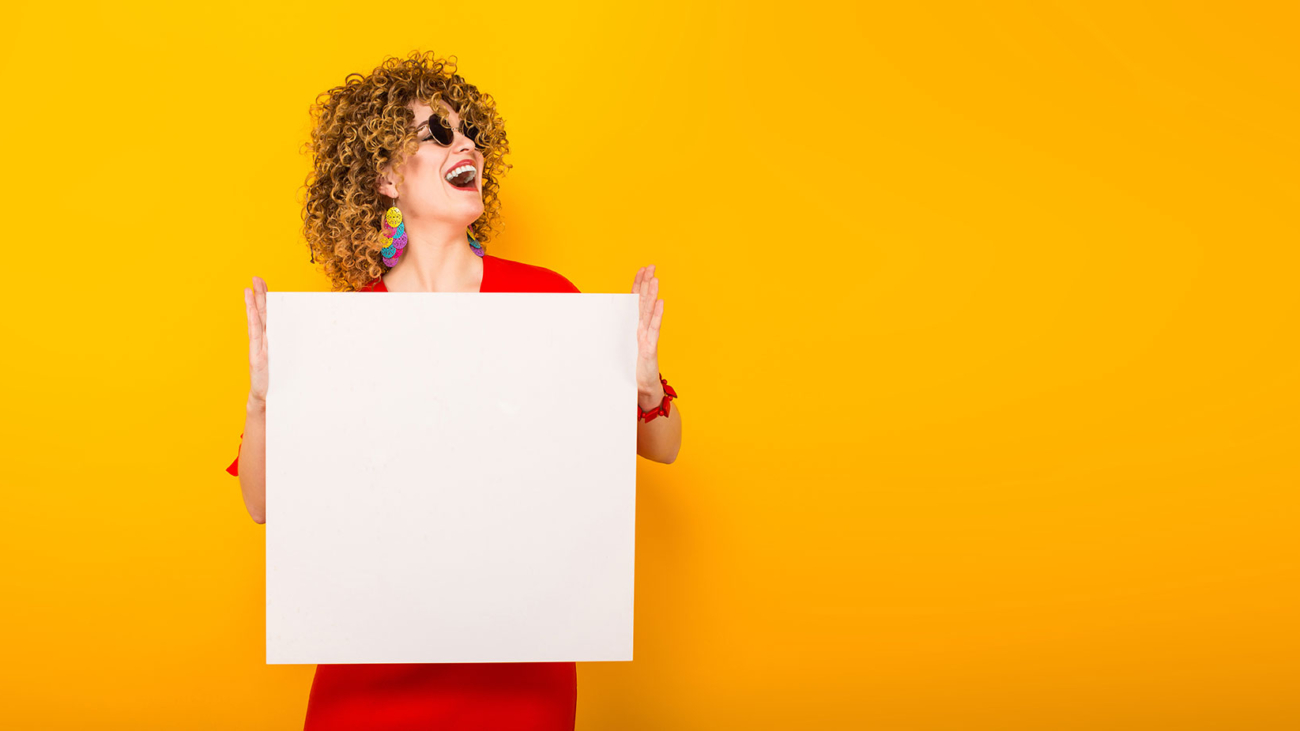
Add a Comment